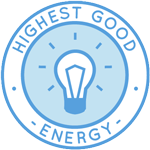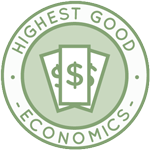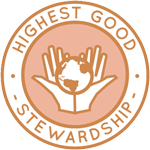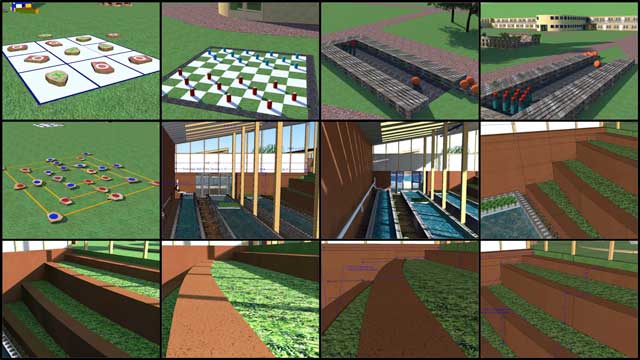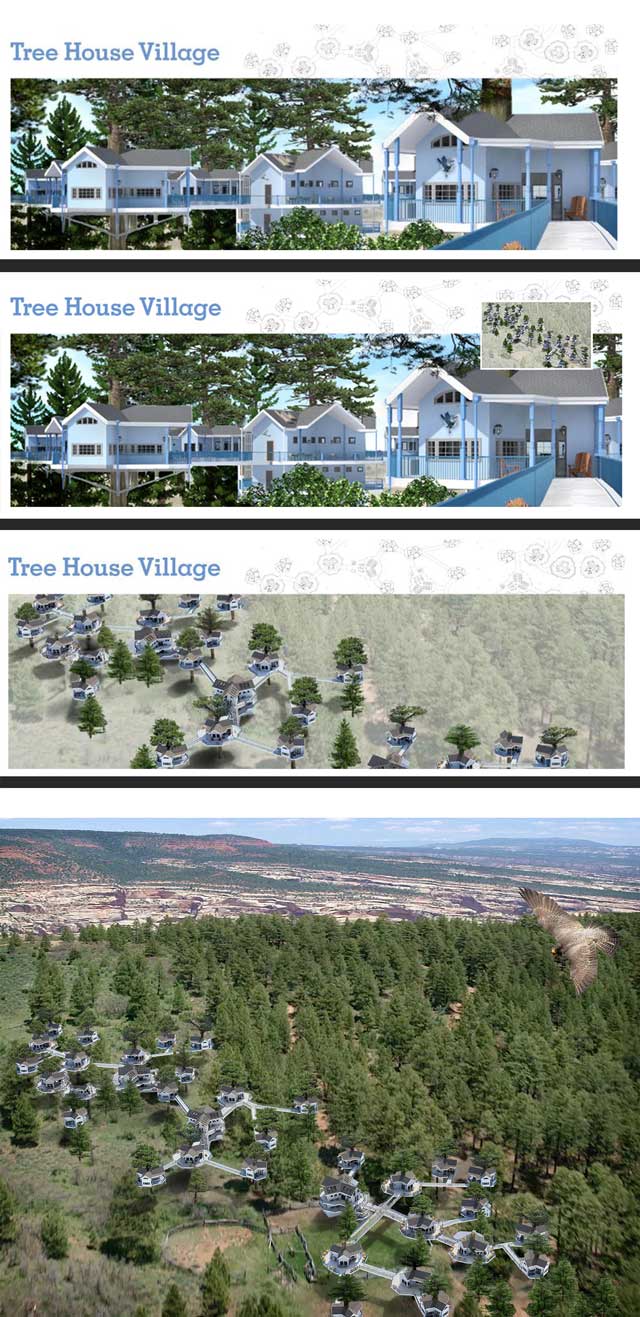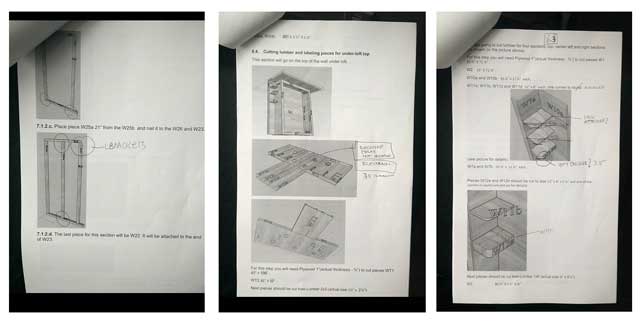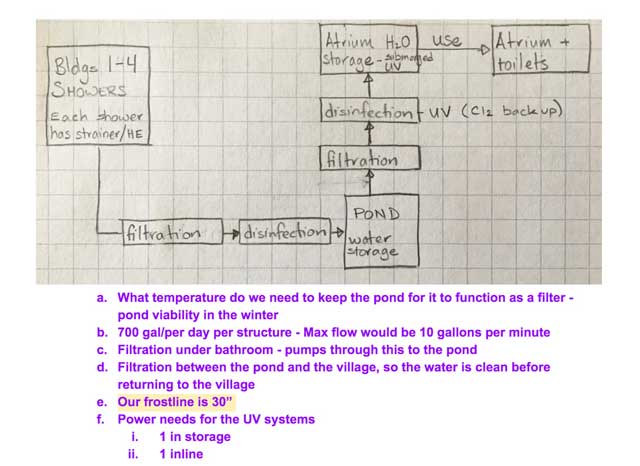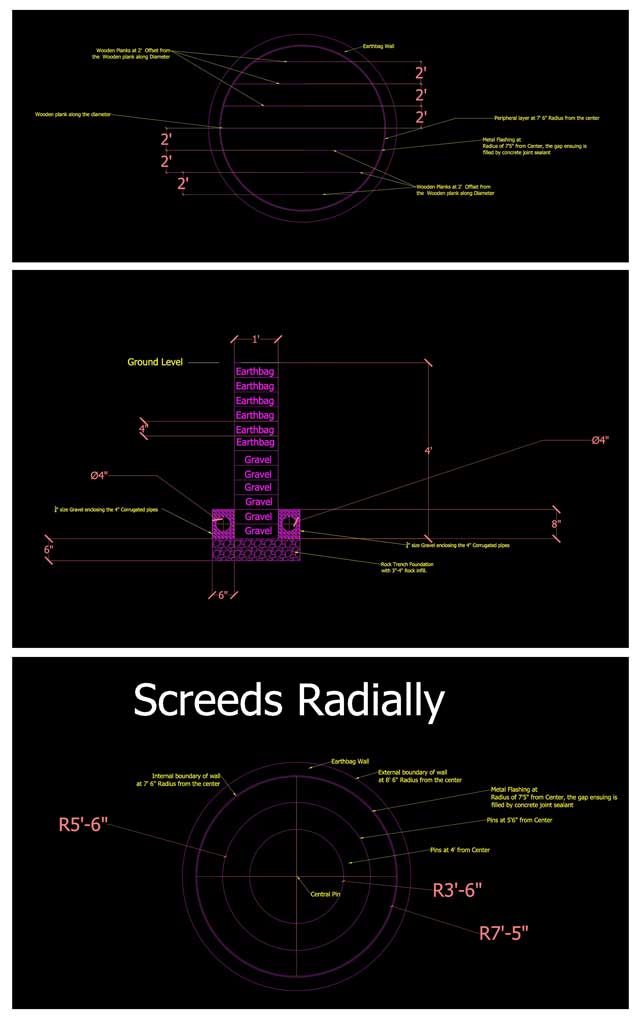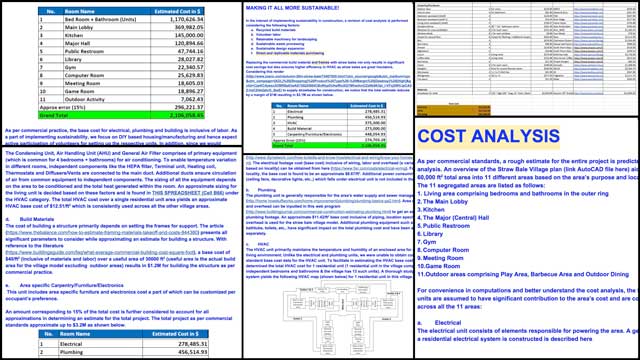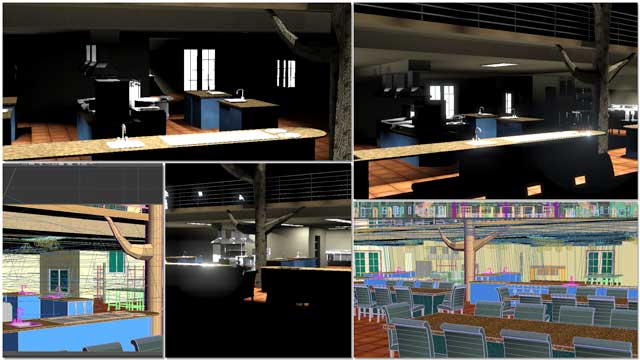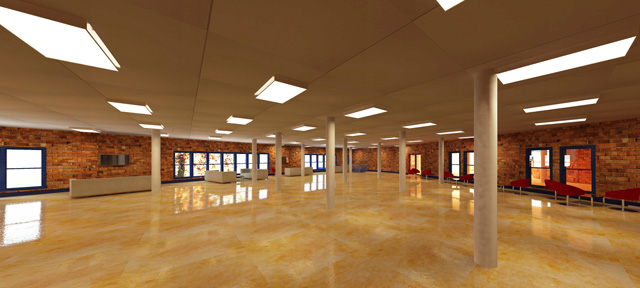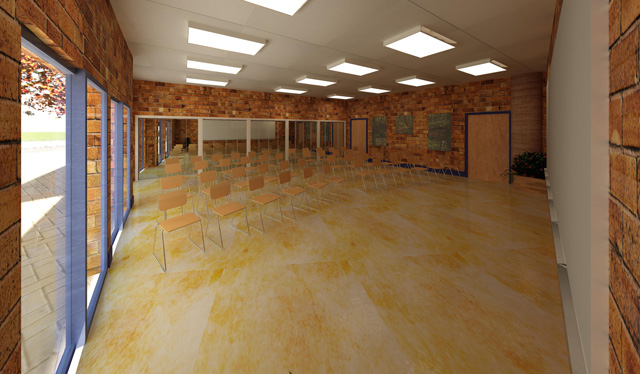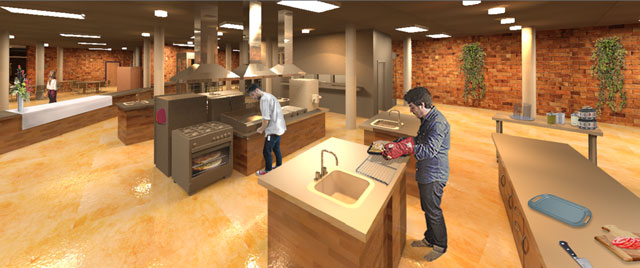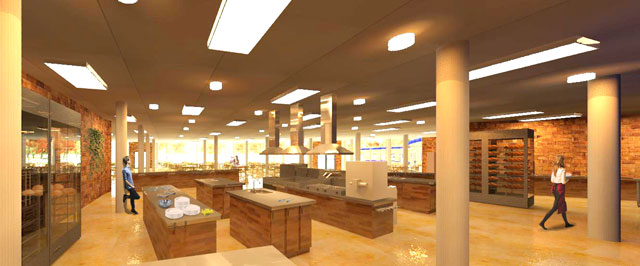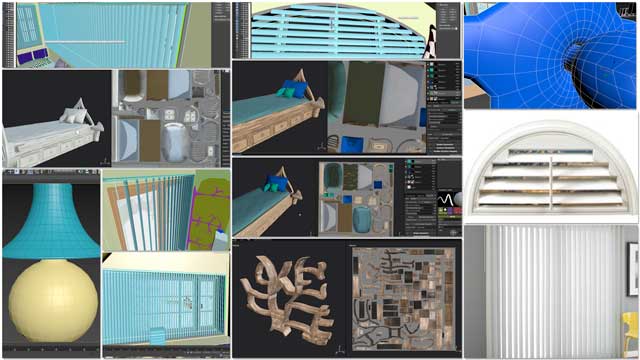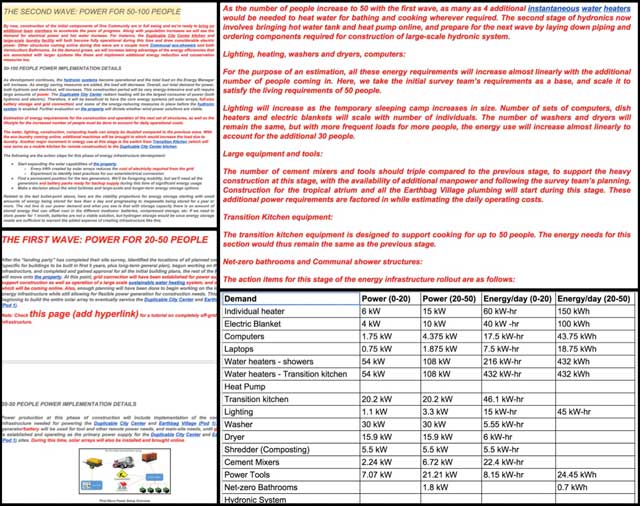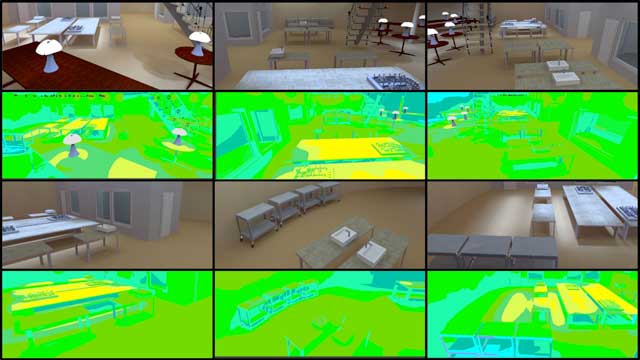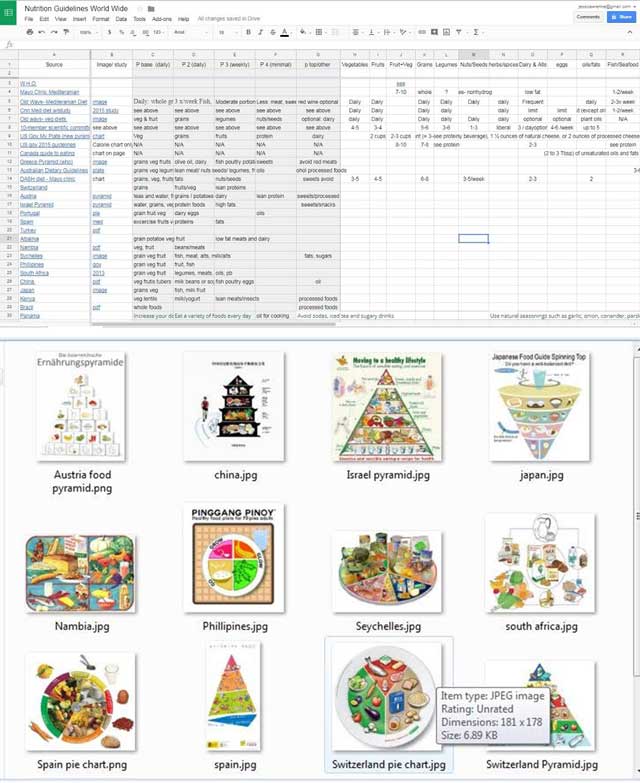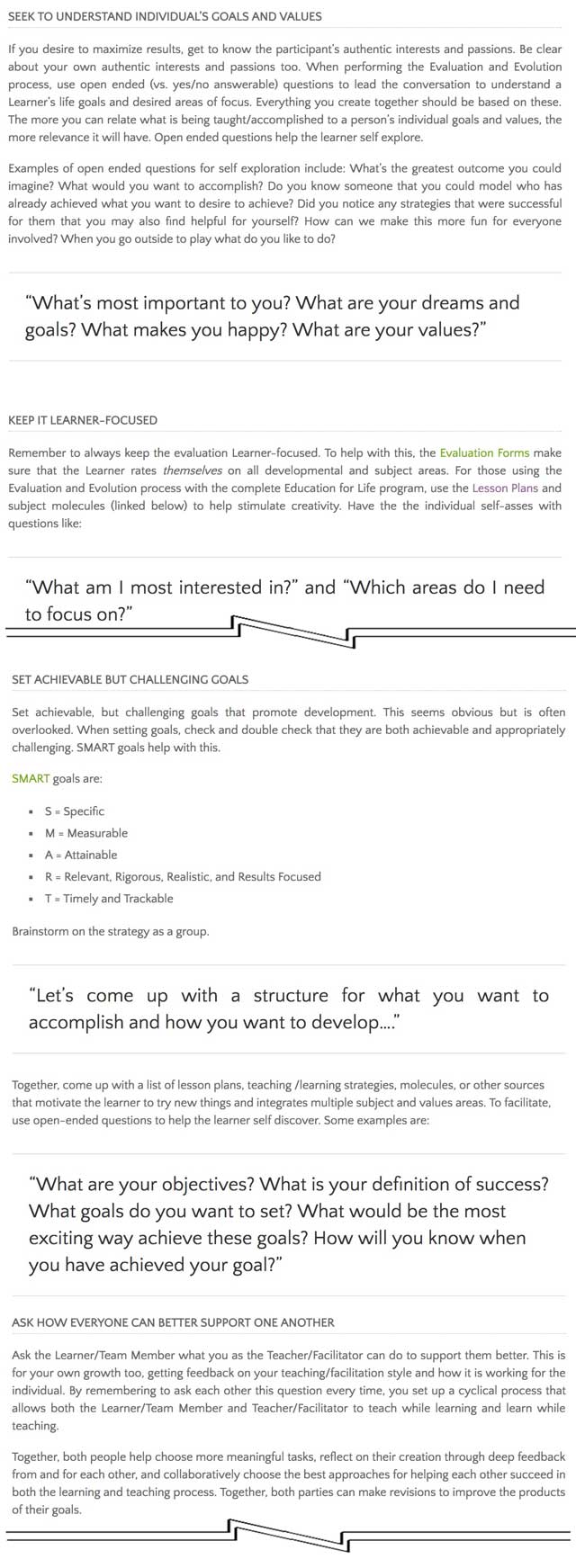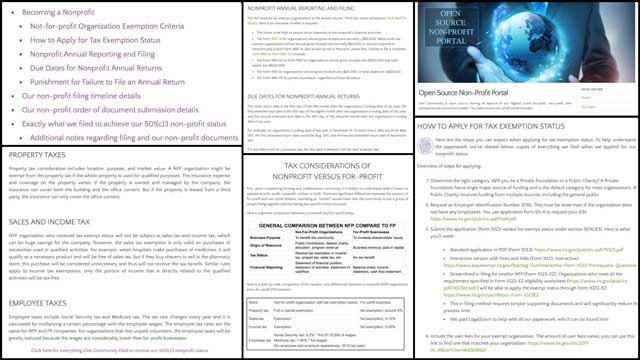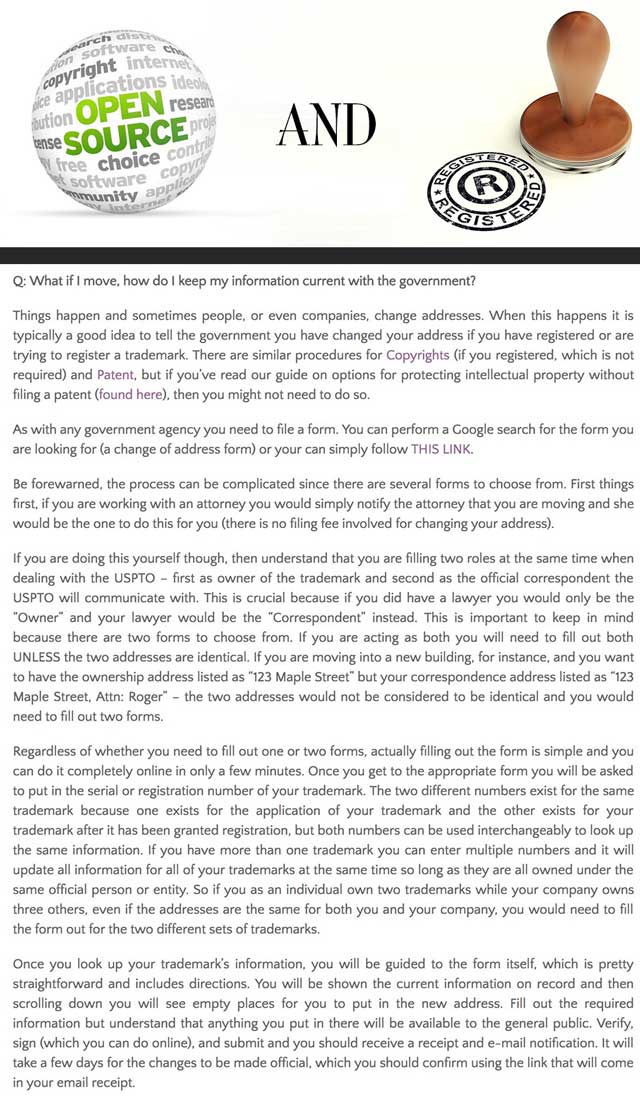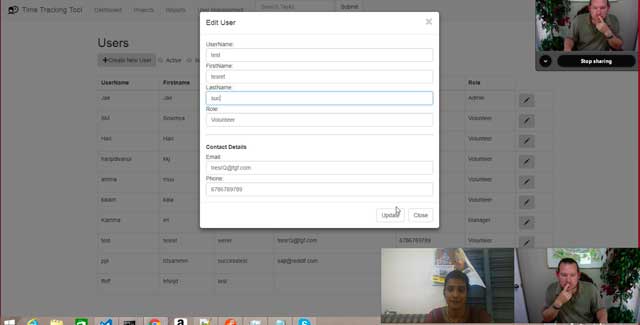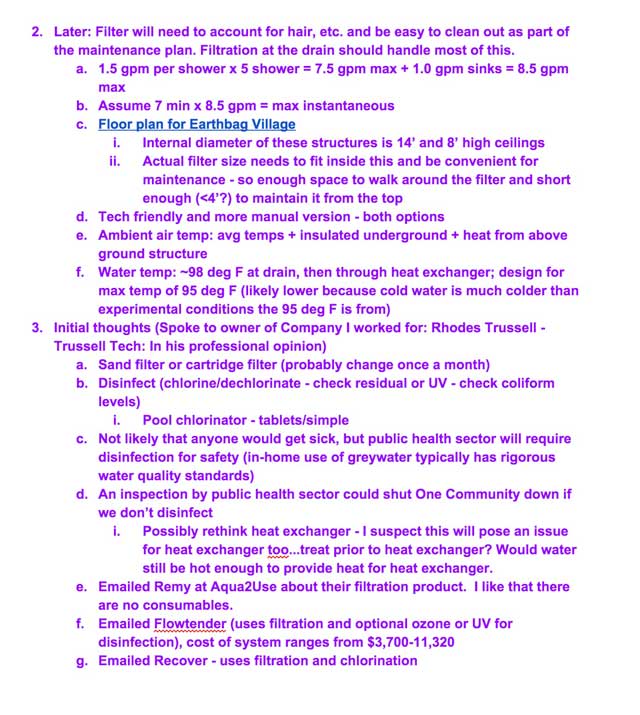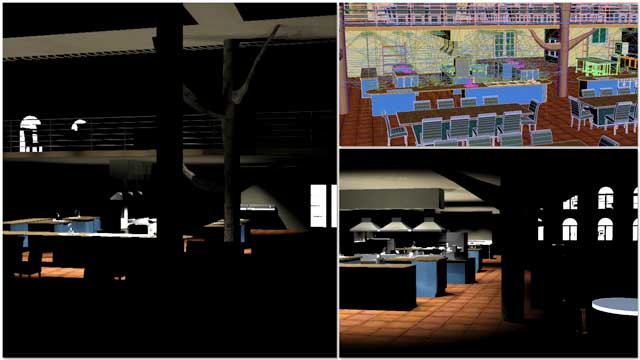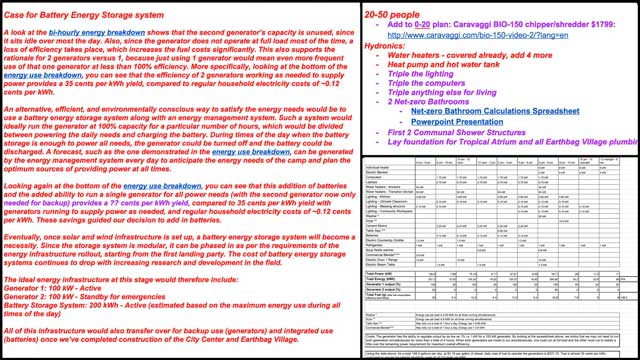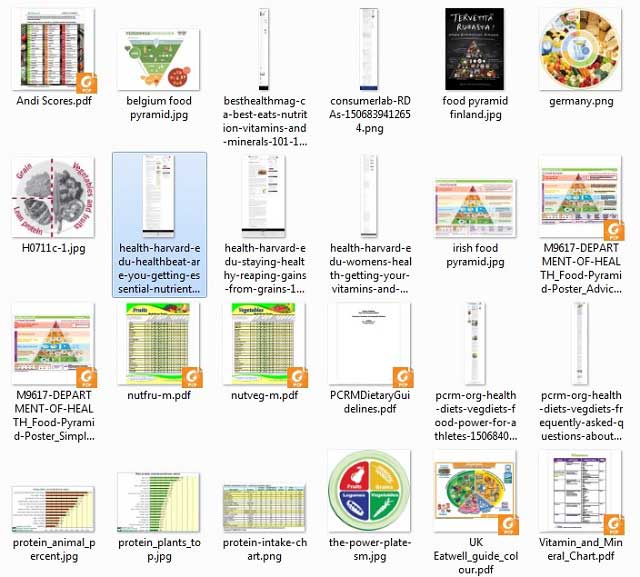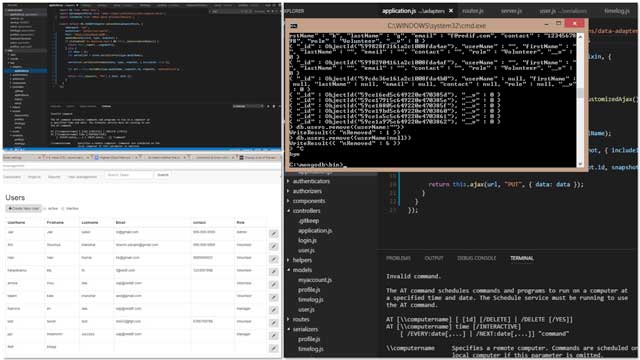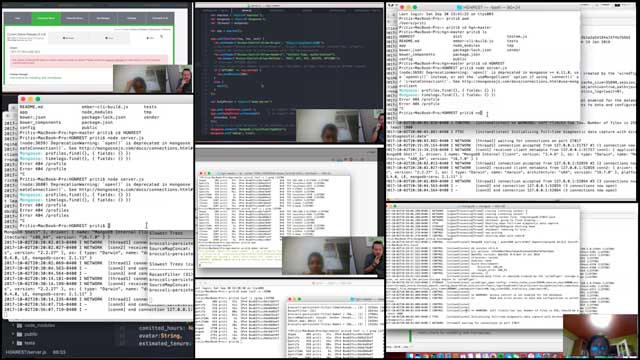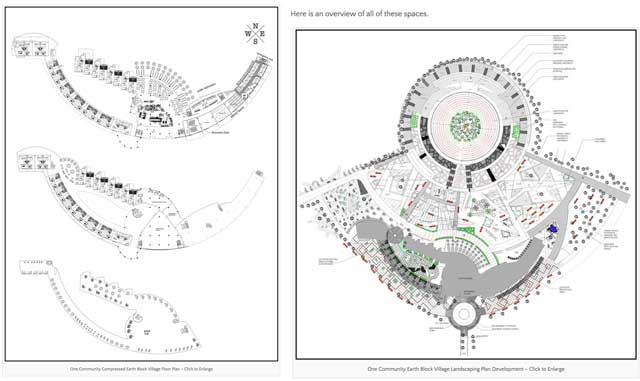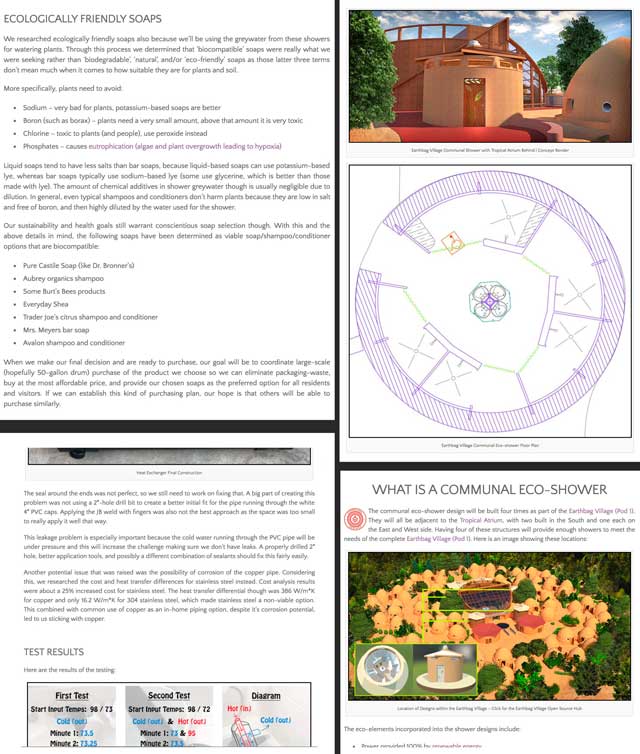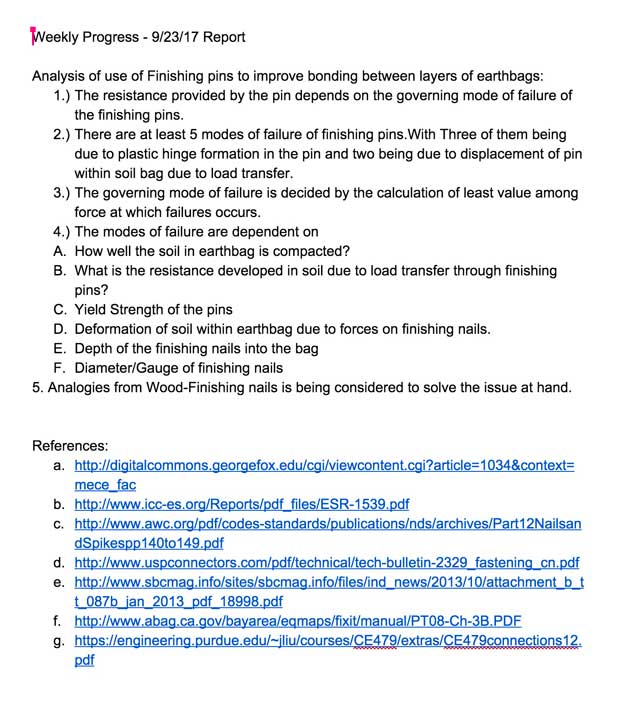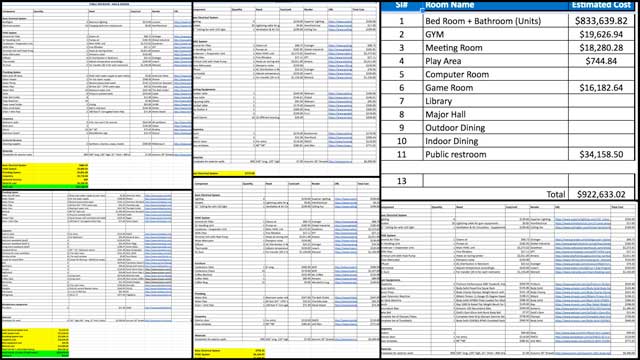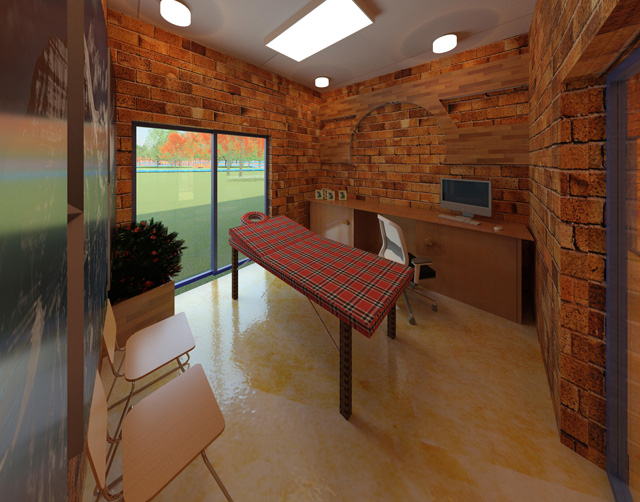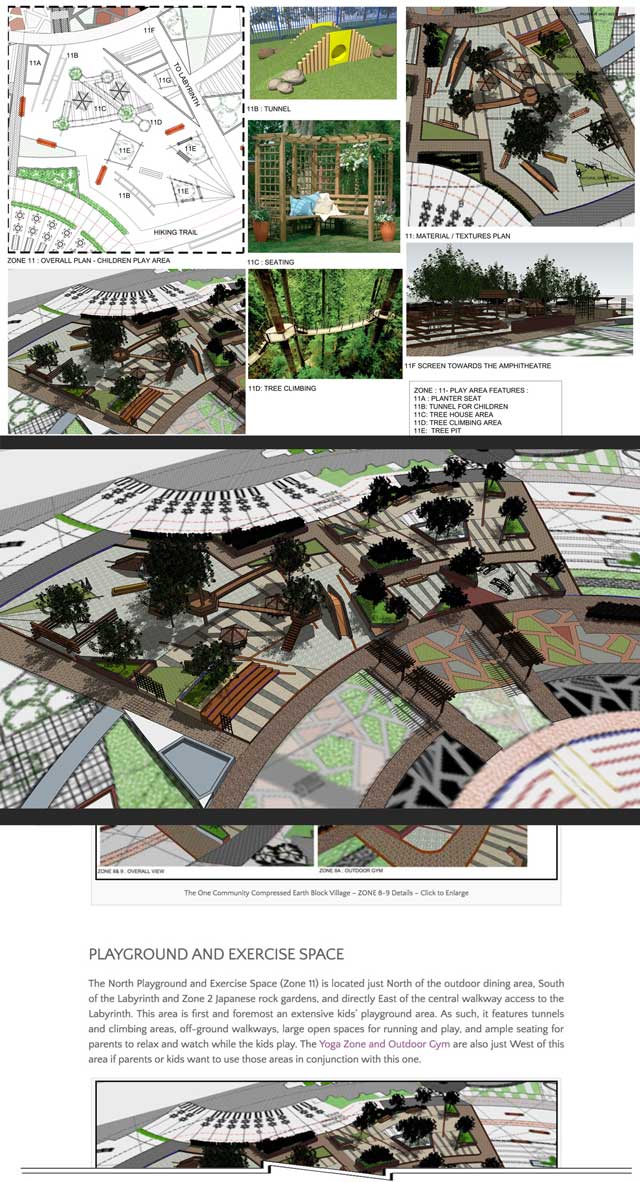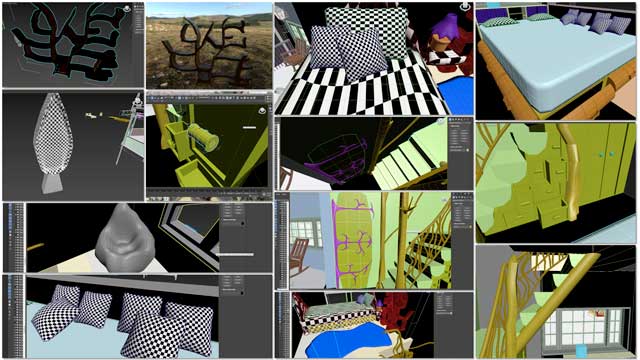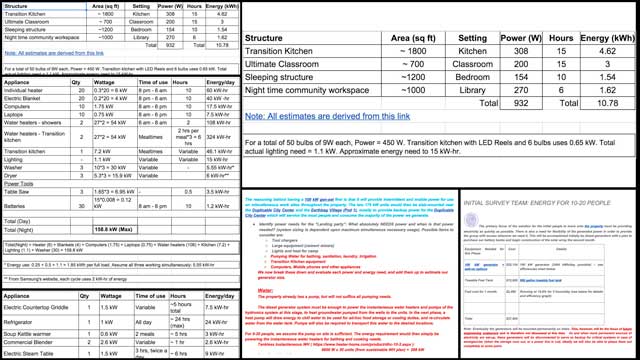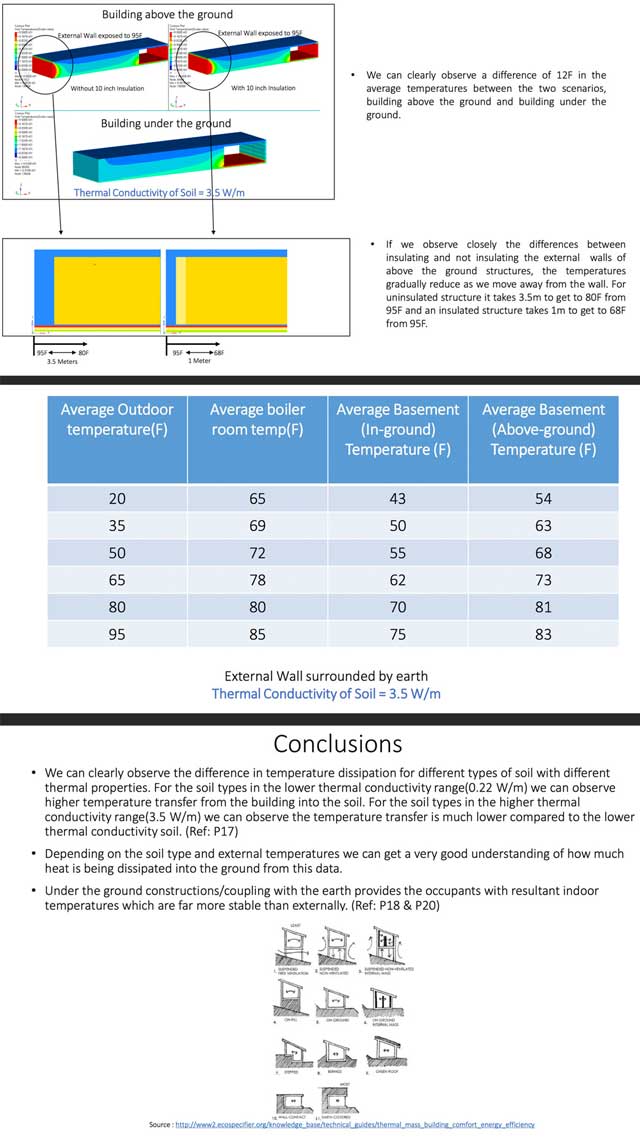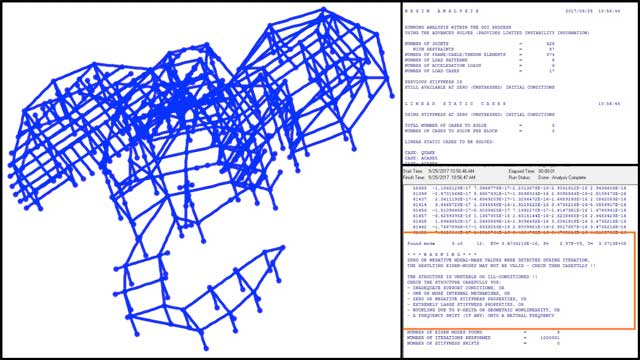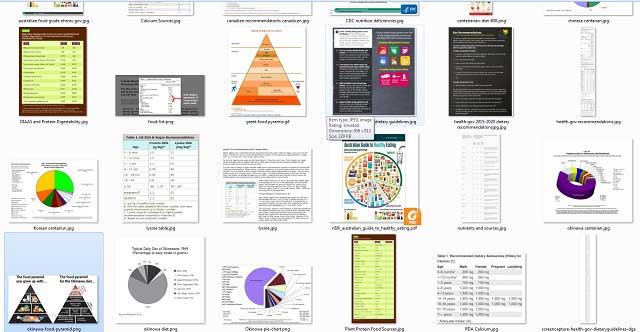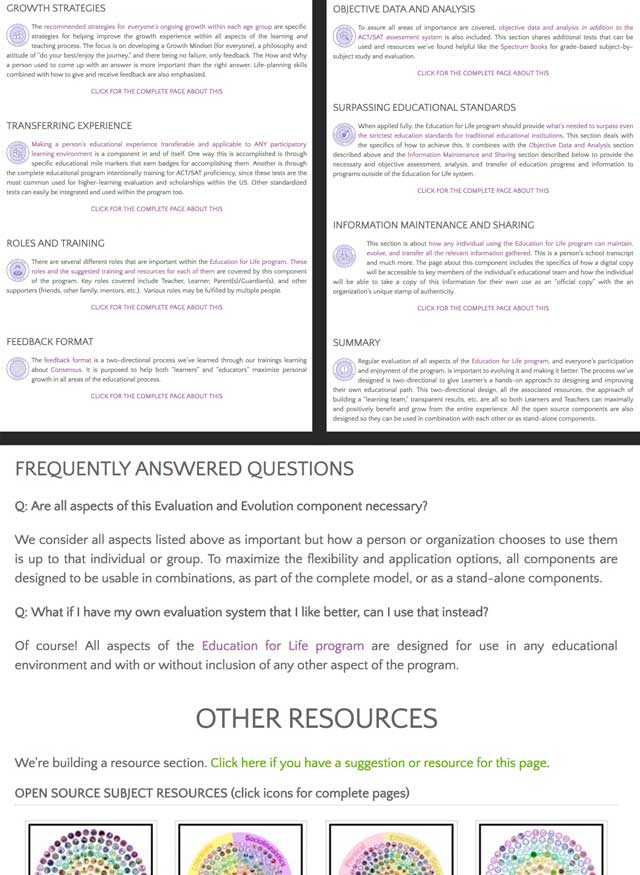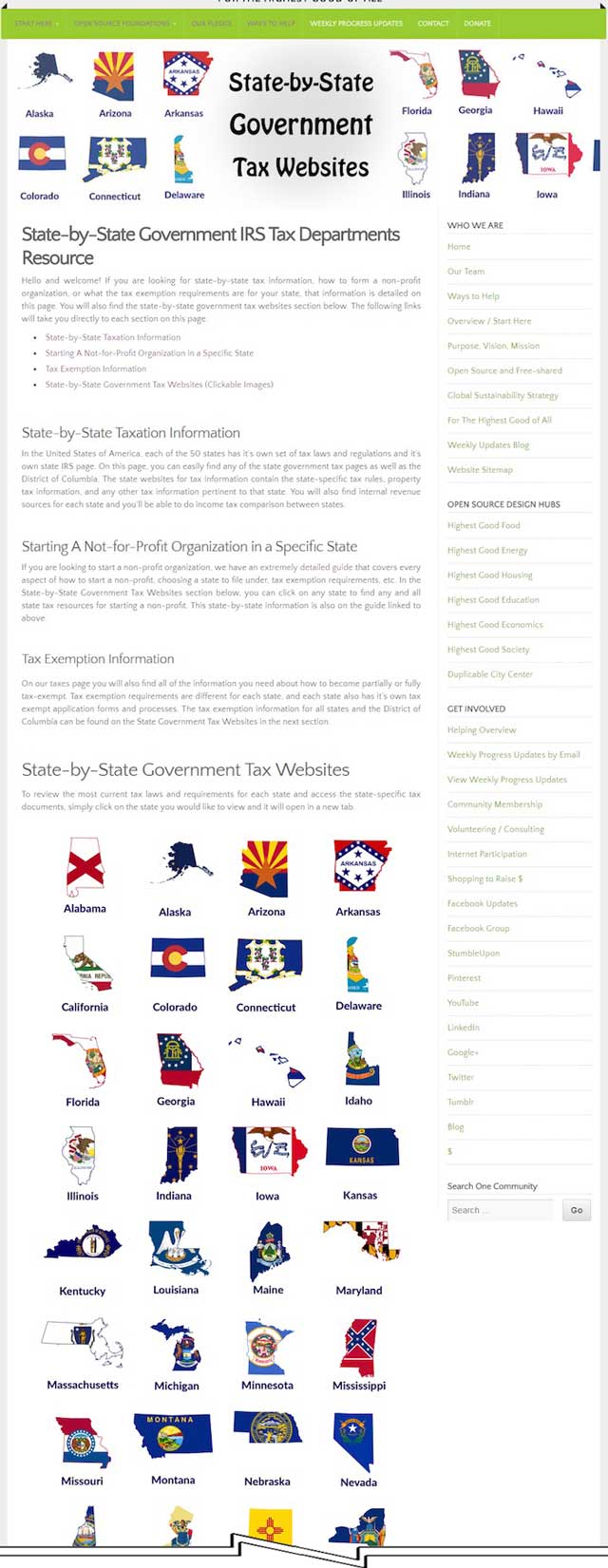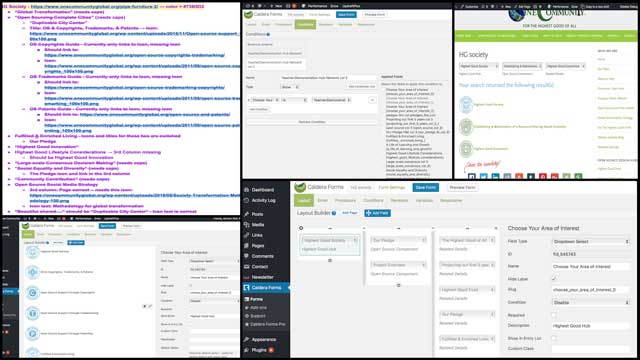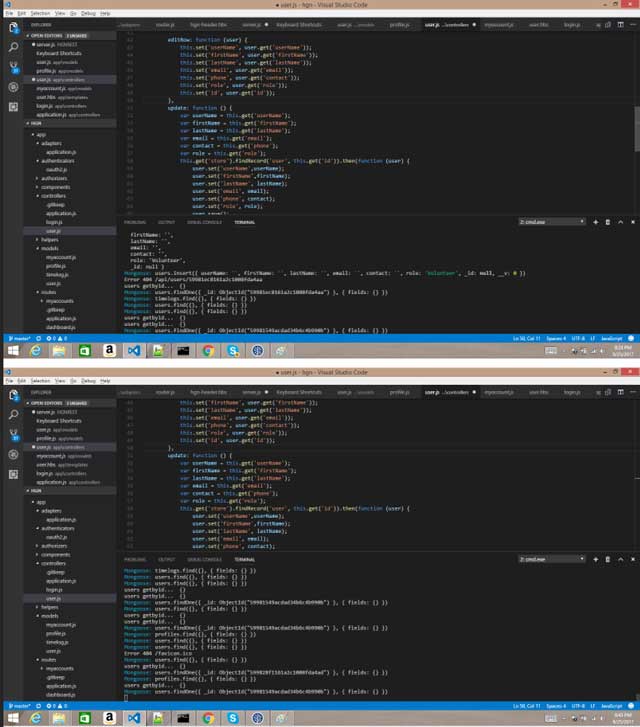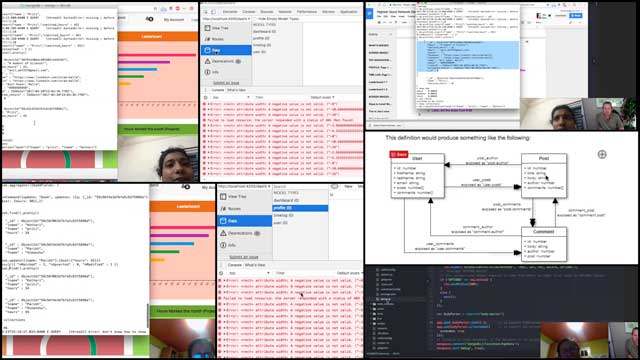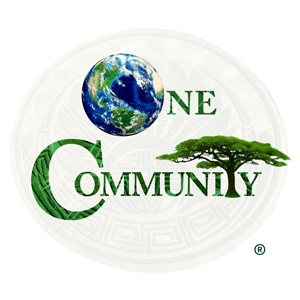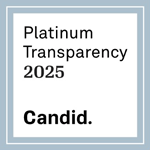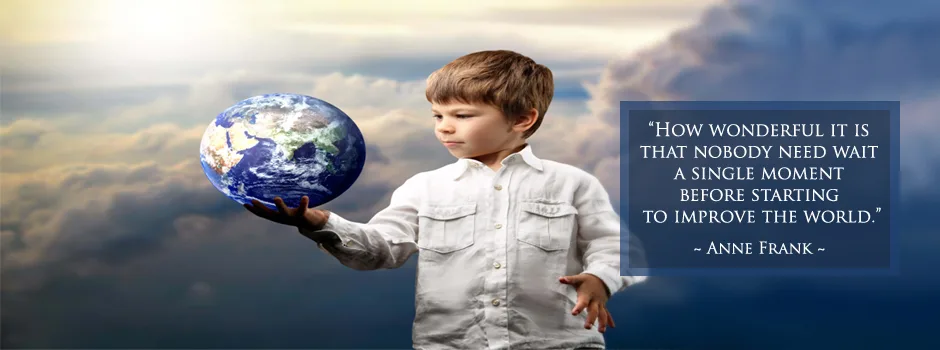
Measurable Sustainable Change – One Community Weekly Progress Update #239
Posted on October 22, 2017 by One Community
How do we create measurable sustainable change globally? One approach would be measuring implementation of sustainable food, energy, and housing models. One Community is supporting this with open source plans for all three of these areas and also adding open source and sustainable approaches to education, for-profit and non-profit economic design, social architecture, fulfilled living, global stewardship practices, and more. We call all of this living and creating for The Highest Good of All and the goal is a sustainable Earth and the benefits that would provide for all life on it.
- Here’s our project overview
- Here’s our world-change methodology
- Here’s how this becomes self-replicating
- Here’s how we are open source and free-sharing all the do-it-yourself designs

OUR MAIN OPEN SOURCE HUBS
Click on each icon to be taken to the corresponding Highest Good hub page.
One Community’s physical location will forward this movement as the first of many self-replicating teacher/demonstration communities, villages, and cities to be built around the world. This is the October 22, 2017 edition (#239) of our weekly progress update detailing our team’s development and accomplishments:
Measurable Sustainable Change
One Community Progress Update #239
Here is the bullet-point list of this last week’s design and progress discussed in detail in the video above:
MEASURABLE SUSTAINABLE CHANGE INTRO: @0:34
HIGHEST GOOD HOUSING: @6:50
- Continued Sketchup design for the open source outdoor areas of the Recycled Materials Village (see below)
- Finished working on the complete Tree House Village render and header images and updated the website with the finalized versions (see below)
- Continued working on the Murphy bed instructions. Here is one of the new instructional-page examples (see below)
- Began updating the Earthbag Village Tools & Equipment page (see below)
- Sangam Stanczak began the design for the open source web lab that will be used test and assure the safety of the filtered greywater from the Communal Eco-shower (see below)
- Jagannathan Shankar Mahadevan completed his 6th week working on the Straw Bale Village Materials Cost Analysis (see below)
- Dean Scholz continued helping us create quality Cob Village renders (see below)
- Hamilton Mateca finished his 60th week helping with the Compressed Earth Block Village design and render details (see below)
- Dan Alleck completed his 3rd week working on the Compressed Earth Block Village render additions (see below)
- Samantha Robinson completed her 12th week working on the interior design for the living structure of the Tree House Village (see below)
DUPLICABLE CITY CENTER: @9:47
- Began updating the website with the new Highest Good energy rollout details for the landing party of 10-20 people (see below)
- Updated the floor plan images and added the most recent cost analysis details to the open source City Center Kitchen page (see below)
- Falgun Patel completed his 8th week continuing to review, run calculations, and update the specifics of the remote-energy setup plan for the Highest Good energy page (see below)
- Oruba Rabie continued working on the City Center structural engineering AutoCAD and SAP2000 models corrections (see below)
- Jin Yu continued work on the concrete foundation design and tutorial details for the Duplicable City Center (see below)
HIGHEST GOOD FOOD: @11:17
- Continued researching and organizing, and added 10 more countries’ nutrition guidelines to the resources chart for our Food Self-sufficiency Transition Plan and Sustainable Food Nutrition Calculations page (see below)
- Created and added to the Aquapini and Walipini section of the site the two new images that show the shared dimensions of all 6 of these structures (see below)
HIGHEST GOOD EDUCATION: @11:58
- Continued building the education Assessment Format open source page and tutorial (see below)
HIGHEST GOOD SOCIETY: @12:31
- Ashwin Patil and the core team continued with edits and updates to the Highest Good society search engine (see below)
MEASURABLE SUSTAINABLE CHANGE SUMMARY: @13:06
- How you can most help us right now and how anyone can help
CLICK HERE IF YOU’D LIKE TO RECEIVE AN EMAIL EACH WEEK WHEN WE RELEASE A NEW UPDATE
YOU CAN ALSO JOIN US THROUGH SOCIAL MEDIA
ONE COMMUNITY WEEKLY UPDATE DETAILS
HIGHEST GOOD HOUSING PROGRESS
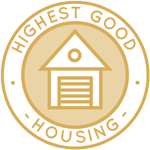 One Community is forwarding measurable sustainable change through Highest Good housing that is artistic and beautiful, more affordable, more space efficient, lasts longer, DIY buildable, and constructed with healthy and sustainable materials:
One Community is forwarding measurable sustainable change through Highest Good housing that is artistic and beautiful, more affordable, more space efficient, lasts longer, DIY buildable, and constructed with healthy and sustainable materials:
- Learn about: Our Upcoming Crowdfunding Campaign
- Learn about the different village models: 7 Sustainable Village Models
- Visit the open source portals for the first two: Earthbag Village OS Hub | Straw Bale Village OS Hub
The core team continued Sketchup design for the open source outdoor areas of the Recycled Materials Village (Pod 6). This week’s focus was continued research and design updates to the outdoor bowling and chess and checkers elements, plus designing an obstacle course with a tire-hop, wobble-log, jumping-stones, tunnel, dodging panels, and low climbing-wall.
In addition, the core team finished working on the complete Tree House Village (Pod 7) render and header images and updated the website with the finalized versions.
Sangam Stanczak (Ph.D. and P.E.) began the design for the open source wet lab that will be used test and assure the safety of the filtered greywater from the Communal Eco-shower. You can see here the layout and initial cost analysis.

Measurable Sustainable Change – Design of the Open Source Wet Lab to Test Greywater – Click to Visit
Jagannathan Shankar Mahadevan (Mechanical Engineer) completed his 6th week working on the Straw Bale Village Materials Cost Analysis. What you see here are more details and images added to the writeup summary discussing the details, sustainability savings, and final estimate. We’d say we’re now about 95% complete with the full cost analysis for this village.
Dean Scholz (Architectural Designer) continued helping us create quality Cob Village (Pod 3) renders. Here is update 86 of Dean’s work, continuing to test and develop the textures and lighting from the skylights and windows for the central dining and presentation hall.
Hamilton Mateca (AutoCAD and Revit Drafter and Designer) also finished his 60th week helping with the Compressed Earth Block Village design and render details. This week’s focus was this final render of the 2nd-Floor Roof Space Looking West that is now also on the site.
Dan Alleck (Designer and Illustrator) completed his 3rd week working on the Compressed Earth Block Village render additions. This week he finished adding people and additional aesthetics to the public bathroom and this render of the 2nd Floor Event and Meeting Space looking Southwest.
Samantha Robinson (Graphic Designer) completed her 12th week working on the interior design for the living structure of the Tree House Village (Pod 7). This week’s focus, as shown here, was unwrapping the stairs and fixing errors so we can start texturing these areas.
DUPLICABLE CITY CENTER PROGRESS
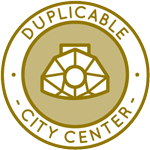 One Community is forwarding measurable sustainable change through a Duplicable and Sustainable City Center that is LEED Platinum certified/Sustainable, can feed 200 people at a time, provide laundry for over 300 people, is beautiful, spacious, and saves resources, money, and space:
One Community is forwarding measurable sustainable change through a Duplicable and Sustainable City Center that is LEED Platinum certified/Sustainable, can feed 200 people at a time, provide laundry for over 300 people, is beautiful, spacious, and saves resources, money, and space:
- Learn about this building and it’s function: Duplicable City Center Open Source Hub
The core team began updating the website with the new Highest Good energy rollout details for the landing party of 10-20 people. You can see some of these updates here.
The core team also updated the floor plan images and added the most recent cost analysis details to the open source City Center Kitchen page, as shown here.

Measurable Sustainable Change – Recent Cost Analysis Details to City Center Kitchen – Click to Visit
Falgun Patel (Mechanical Engineer) completed his 8th week continuing to review, run calculations, and update the specifics of the remote-energy setup plan for the Highest Good energy page. This week’s focus, as shown here, was updating the narrative for the 20-50 and 50-100 waves of volunteers.
Oruba Rabie (Ph.D, PE, and Civil Engineer) also continued working on the City Center structural engineering AutoCAD and SAP2000 models corrections, fixing them in SAP2000 and making notes like the ones shown here for corrections needed in AutoCAD.

Measurable Sustainable Change – Continued Work – City Center Structural Engineering – Click for Page
And Jin Yu (Structural Engineering Designer) also continued her work on the concrete foundation design and tutorial details for the Duplicable City Center. What you see here is a summary of several weeks of work updating the related AutoCAD drawings.
HIGHEST GOOD FOOD PROGRESS
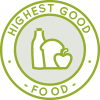 One Community is forwarding measurable sustainable change through Highest Good food that is more diverse, more nutritious, locally grown and sustainable, and part of our open source botanical garden model to support and share bio-diversity:
One Community is forwarding measurable sustainable change through Highest Good food that is more diverse, more nutritious, locally grown and sustainable, and part of our open source botanical garden model to support and share bio-diversity:
- Learn about the structures: Hoop House Hub | Aquapini & Walipini Open Source Hub
- See what we’ll be growing: Gardens & Hoop Houses | Large-scale Structures | Food Forest | TA
This week, the core team continued researching and organizing, and added 10 more countries’ nutrition guidelines to the resources chart for our Food Self-sufficiency Transition Plan and Sustainable Food Nutrition Calculations page, as you see here.
This week, the core team created and added to the Aquapini and Walipini section of the site the two new images here that show the shared dimensions of all 6 of these structures.
HIGHEST GOOD EDUCATION PROGRESS
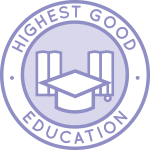 One Community is forwarding measurable sustainable change through Highest Good education that is for all ages, applicable in any environment, adaptable to individual needs, far exceeds traditional education standards, and more fun for both the teachers and the students:
One Community is forwarding measurable sustainable change through Highest Good education that is for all ages, applicable in any environment, adaptable to individual needs, far exceeds traditional education standards, and more fun for both the teachers and the students:
- Learn about the components: Education open source hub
- Learn how the components work together: How to use the Education for Life Program
This week, the core team continued building the education Assessment Format open source page and tutorial. This week we finished the Helpful Evaluation Tips and Tools section, by adding remaining details to 3 components within it, as shown here.
HIGHEST GOOD SOCIETY PROGRESS
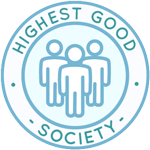 One Community is forwarding measurable sustainable change through a Highest Good society approach to living that is founded on fulfilled living, the study of meeting human needs, Community, and making a difference in the world:
One Community is forwarding measurable sustainable change through a Highest Good society approach to living that is founded on fulfilled living, the study of meeting human needs, Community, and making a difference in the world:
- Read the Highest Good society overview: Highest Good Society
- Learn about the model for fulfilled living and sharing: A Day in the Life
- Learn about the 4 economic models: RBE | For-profit | Non-profit | Entrepreneurship
- Learn about our open source community collaboration and management software: The Highest Good Network
The core team and Ashwin Patil (Web Developer) continued with edits and updates to the Highest Good society search engine, integrating changes and finding additional areas needing to be fixed. The search engine is now 95% complete.

Measurable Sustainable Change – Edits, Updates – Highest Good Society Search Engine – Click to Visit
AND WE PRODUCED THIS WEEKLY UPDATES BLOG – CLICK HERE TO SUBSCRIBE
FOLLOW ONE COMMUNITY’S PROGRESS (click icons for our pages)
INVESTOR PAGES
GET INVOLVED
CONSULTANTS | WAYS ANYONE CAN HELP | MEMBERSHIP
CLICK HERE FOR ALL PAST UPDATES
WHAT ONE COMMUNITY IS CREATING
One Community is creating a place to grow together and change the world together thereby Creating a Better World and achieving Measurable Sustainable Change. We are creating a space that helps each other live in integrity with each other and the planet as we strive to be the greatest versions of ourselves. We do this by harmoniously respecting each other, nature, and the rest of our one shared planet.
Our goal is to demonstrate what we feel is the most sustainable, healthy, and fun environment we can create. A place based on compassion, kindness, and collaboration. This replicable community will serve as an example for what is possible.
Throughout our design process we are open sourcing and free-sharing everything needed for construction and replication. This includes what we call “Highest Good” approaches to food, energy, housing, education, for-profit and non-profit economics design, social architecture, fulfilled living, stewardship practices and more. We are creating these resources for implementation as individual components or complete developments called teacher/demonstration hubs. These hubs will help launch additional hubs as awareness and knowledge grow.
BUILDING THE FIRST OF MANY
One Community will be the first teacher/demonstration hub. It will function as an experiential-learning model that facilitates mass participation to address humanity’s most pressing challenges through: A replicable model for expansion, building seven self-sufficient village/city prototypes, becoming the world leader in open-source sustainability solutions, and evolving and expanding ALL aspects of sustainable living.
WHY ONE COMMUNITY IS CREATING THIS
The One Community self-replicating model is capable of creating a sustainable planet within 30 years. We will achieve this by establishing successful teacher/demonstration hubs on every continent. Villages include designs appropriate for each of the five main types of climates. They also include options for even the most challenged economies. These hubs will collaborate with one another, share ideas, resources, and work together as a network to heal the planet. They will also transform the global lifestyle to a more enjoyable, fulfilling, healthy, and sustainable one.
The specifics of how One Community is accomplishing this can be found on the One Community Solution Model to Create Solution-creating Models Page. Research supporting and showing the benefits of a model like this can be found on our Research and Resources Articles Archive.
Even if we don’t achieve our ultimate goal of global transformation, a self-replicating teacher/demonstration model like this will take a relatively short period of time to positively affect millions while inspiring millions more. For One Community residents (the Pioneer Team), the idea of creating and sharing the social and recreational experience with visitors is also fun, exciting, fulfilling, and an additional reason why we are creating this.
SUMMARY
One Community sees the issues of the world as interdependent and interconnected. To address them simultaneously, we are open-source blueprinting a more advanced standard of living by designing holistic, environmentally-regenerative, self-sustaining, adaptable solutions for all areas of sustainability and Creating a Better World . We will model these within a comprehensive “village/city” which will be built in the southwestern U.S. This teacher/demonstration hub will be a place people can experience a new way of living and then replicate it with our open source blueprints: creating a model solution that creates additional solution-creating models.
One Community Welcomes Jagannathan Shankar Mahadevan to the Engineering Team
Posted on October 17, 2017 by One Community
One Community welcomes Jagannathan Shankar Mahadevan to the Engineering Team as our newest Volunteer/Consultant!

Mechanical Engineer: Jagannathan earned his Master’s degree in Mechanical Engineering from The University of Texas at Dallas. Throughout the course of graduate study, Jagannathan has served as a Teaching Assistant for 2 years and has a knack for interpreting and conveying technicalities in layman terms. His Master’s thesis involved optimizing laser attributes for favorable laser-metal interactions. He is a regular volunteer for “Engineering bright futures for Autism” – an annual volunteering event aimed at enhancing social competencies of kids displaying signs of autism. Prior to obtaining his Master’s degree, Jagannathan earned his Bachelor’s degree in Mechanical Engineering from Anna University, India. Currently, Jagannathan is passionate about sustainable development and believes in efficient utilization of fundamental resources to combat global climate change. Apart from work, he enjoys spending time outdoors by playing volleyball. In his free time, Jagannathan does not fail to visit a state park, pitch a tent and camp. As a member of the One Community team, Jagannathan is applying his diverse skill set working on cost analysis for the 7 sustainable village models, climate battery design, and structural engineering for the Duplicable City Center.
WELCOME TO THE TEAM JAGANNATHAN!
FOLLOW ONE COMMUNITY’S PROGRESS (click icons for our pages)
INVESTOR PAGES
GET INVOLVED
One Community Welcomes Falgun Patel to the Engineering Team
Posted on October 17, 2017 by One Community
One Community welcomes Falgun Patel to the Engineering Team as our newest Volunteer/Consultant!

Mechanical Engineer: Falgun holds a B.Tech in Mechanical Engineering from Sardar Patel College of Engineering in Mumbai, and an MS in Mechanical Engineering & the ‘Leaders in Sustainability’ Graduate Certificate from University of California, Los Angeles. During his undergraduate studies, he participated in and led teams for student vehicle design and fabrication competitions. He is skilled in 3D Modeling (CATIA V5, SolidWorks) and FEA (ANSYS, Abaqus) softwares, with the help of which he has designed various mechanical systems. His interest in electric vehicles, renewable energy and sustainability has driven him to work on projects related to energy storage, energy conservation, smart microgrids and green buildings. As a One Community Volunteer, he has helped update the complete Highest Good Energy rollout details in conjunction with updating the Solar and Wind Energy Microgrid open source guides.
WELCOME TO THE TEAM FALGUN!
FOLLOW ONE COMMUNITY’S PROGRESS (click icons for our pages)
INVESTOR PAGES
GET INVOLVED
Systems for Eco-Change – One Community Weekly Progress Update #238
Posted on October 15, 2017 by One Community
One Community is creating systems for eco-change that combine sustainable and open source and free-shared approaches to food, energy, housing, education, for-profit and non-profit economic design, social architecture, fulfilled living, global stewardship practices, and more. We call this living and creating for The Highest Good of All.
- Here’s our project overview
- Here’s our world-change methodology
- Here’s how this becomes self-replicating
- Here’s how we are open source and free-sharing all the do-it-yourself designs
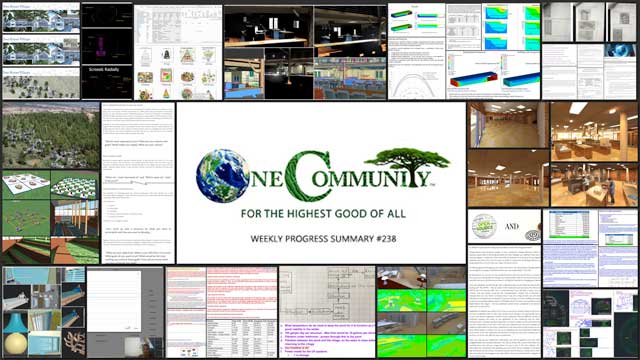
OUR MAIN OPEN SOURCE HUBS
Click on each icon to be taken to the corresponding Highest Good hub page.
One Community’s physical location will forward this movement as the first of many self-replicating teacher/demonstration communities, villages, and cities to be built around the world. This is the October 15, 2017 edition (#238) of our weekly progress update detailing our team’s development and accomplishments:
Systems for Eco-Change
One Community Progress Update #238
Here is the bullet-point list of this last week’s design and progress discussed in detail in the video above:
SYSTEMS FOR ECO-CHANGE INTRO: @0:34
HIGHEST GOOD HOUSING: @5:43
- Continued Sketchup design for the open source outdoor areas of the Recycled Materials Village (see below)
- Continued working on the complete Tree House Village render (see below)
- Continued working on the Murphy bed instructions (see below)
- Sangam Stanczak continued researching the filtration options for the Communal Eco-shower greywater (see below)
- Hemanth Kotaru completed his 11th week doing research and running calculations for the Earthbag Village (see below)
- Jagannathan Shankar Mahadevan completed his 5th week working on the Straw Bale Village cost analysis (see below)
- Dean Scholz continued helping us create quality Cob Village renders (see below)
- Hamilton Mateca finished his 59th week helping with the Compressed Earth Block Village design and render details (see below)
- Dan Alleck completed his 2nd week working on the Compressed Earth Block Village render additions (see below)
- Samantha Robinson completed her 11th week working on the interior design for the living structure of the Tree House Village (see below)
DUPLICABLE CITY CENTER: @8:46
- Falgun Patel completed his 7th week continuing to review, run calculations, and update the specifics of the remote-energy setup plan so we can update the Highest Good energy page (see below)
- Dipti Dhondarkar continued with her 54th week of work on the lighting specifics for the City Center (see below)
- Vamsi Pulugurtha finished his work on the basement details for the City Center Heating and Cooling open source hub (see below)
- Oruba Rabie and Haoxuan “Hayes” Lei continued working on the City Center structural engineering details (see below)
HIGHEST GOOD FOOD: @10:16
- Continued researching and organizing, and made a chart and images of recently found resources for our Food Self-sufficiency Transition Plan and Sustainable Food Nutrition Calculations page (see below)
HIGHEST GOOD EDUCATION: @10:50
- Continued building the education Assessment Format open source page and tutorial (see below)
HIGHEST GOOD SOCIETY: @11:18
- Added new non-profit tax requirement specifics to the open source Non-profit Portal (see below)
- Oz Czerski helped us write a new tutorial for changing your official information in relation to Trademarks (see below)
- Sowmya Manohar and Priti Kothari continued their work developing the Highest Good Network software (see below)
SYSTEMS FOR ECO-CHANGE SUMMARY: @12:26
- How you can most help us right now and how anyone can help
CLICK HERE IF YOU’D LIKE TO RECEIVE AN EMAIL EACH WEEK WHEN WE RELEASE A NEW UPDATE
YOU CAN ALSO JOIN US THROUGH SOCIAL MEDIA
ONE COMMUNITY WEEKLY UPDATE DETAILS
HIGHEST GOOD HOUSING PROGRESS
 One Community is creating systems for Eco-Change through Highest Good housing that is artistic and beautiful, more affordable, more space efficient, lasts longer, DIY buildable, and constructed with healthy and sustainable materials:
One Community is creating systems for Eco-Change through Highest Good housing that is artistic and beautiful, more affordable, more space efficient, lasts longer, DIY buildable, and constructed with healthy and sustainable materials:
- Learn about: Our Upcoming Crowdfunding Campaign
- Learn about the different village models: 7 Sustainable Village Models
- Visit the open source portals for the first two: Earthbag Village OS Hub | Straw Bale Village OS Hub
This last week the core team continued Sketchup design for the open source outdoor areas of the Recycled Materials Village (Pod 6). This week’s focus was continued research and design updates to include outdoor games made with recycled items like marked stones, cans, bottles, and recycled-tire mulch.
The core team also continued working on the complete Tree House Village (Pod 7) render. This week’s focus was creating 3 options for the webpage header, and the final render of the complete village, all of which you can see here:
And, the core team continued working on the Murphy bed instructions. Here you see the printed assembly instructions with design questions and notes.
Sangam Stanczak (Ph.D. and P.E.) continued researching the filtration options for the Communal Eco-shower greywater. This week’s focus was finalizing the design outline, which you can see here.
Hemanth Kotaru (Structural Engineering Masters Student) completed his 11th week with us doing research and running calculations for the Earthbag Village. This week’s focus was editing and adding more details to these drawing and doing research on rubble foundations.
Jagannathan Shankar Mahadevan (Mechanical Engineer) completed his 5th week working on the Straw Bale Village cost analysis. What you see here is the developing writeup summary discussing the details, sustainability savings, and final estimate. We’d say we’re now about 90% complete with the full cost analysis for this village.
Dean Scholz (Architectural Designer) continued helping us create quality Cob Village (Pod 3) renders. Here is update 85 of Dean’s work, continuing to test and develop the textures and lighting from the skylights and windows for the central dining and presentation hall.
Hamilton Mateca (AutoCAD and Revit Drafter and Designer) also finished his 59th week helping with the Compressed Earth Block Village design and render details. This week’s focus was these two final renders of the 2nd-Floor Event and Meeting Space looking SW and this one of the East-wing classroom spaces that are also purposed for and usable for yoga, tai chi, or other health and wellness classes.
Dan Alleck (Designer and Illustrator) completed his 2nd week working on the Compressed Earth Block Village render additions. This week he finished adding people and additional aesthetics to the two kitchen renders you see here and live on the site.
Samantha Robinson (Graphic Designer) completed her 11th week working on the interior design for the living structure of the Tree House Village (Pod 7). This week’s focus, as shown here, was creating top parts for the blinds downstairs and upstairs, recoloring the tree shelf, lamp, drawer, and doorknob details, and sculpting and painting the twin bed parts.
DUPLICABLE CITY CENTER PROGRESS
 One Community is creating systems for Eco-Change through a Duplicable and Sustainable City Center that is LEED Platinum certified/Sustainable, can feed 200 people at a time, provide laundry for over 300 people, is beautiful, spacious, and saves resources, money, and space:
One Community is creating systems for Eco-Change through a Duplicable and Sustainable City Center that is LEED Platinum certified/Sustainable, can feed 200 people at a time, provide laundry for over 300 people, is beautiful, spacious, and saves resources, money, and space:
- Learn about this building and it’s function: Duplicable City Center Open Source Hub
Falgun Patel (Mechanical Engineer) completed his 7th week continuing to review, run calculations, and update the specifics of the remote-energy setup plan so we can update the Highest Good energy page. This week’s focus, as shown here, was the calculations and narrative for the 20-50 and 50-100 waves of volunteers.
Dipti Dhondarkar, (Electrical Engineer) continued with her 54th week of work on the lighting specifics for the City Center. This week’s focus was finalizing the lighting options for the Dining Dome kitchen, which you can see here in this collage that we’ve also added to the website.
Vamsi Pulugurtha (Mechanical Engineer) also finished his work on the basement details for the City Center Heating and Cooling open source hub. What you see here are some examples of Vamsi’s final work editing, updating graphics so they have matching scales, and presenting his final recommendation for insulating the City Center basement.
Oruba Rabie (Ph.D, PE, and Civil Engineer) and Haoxuan “Hayes” Lei (Structural Engineer) also continued working on the City Center structural engineering details. What you see here are some screenshots of their process continuing to find and correct errors and discrepancies between the AutoCAD and SAP2000 models.
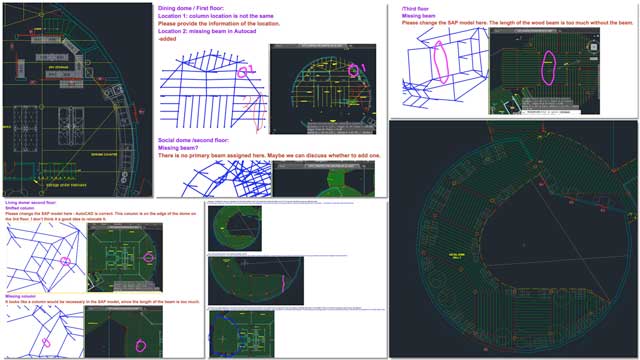
Systems for Eco-Change – Continued Work – City Center Structural Engineering Details – Click for Page
HIGHEST GOOD FOOD PROGRESS
 One Community is creating systems for Eco-Change through Highest Good food that is more diverse, more nutritious, locally grown and sustainable, and part of our open source botanical garden model to support and share bio-diversity:
One Community is creating systems for Eco-Change through Highest Good food that is more diverse, more nutritious, locally grown and sustainable, and part of our open source botanical garden model to support and share bio-diversity:
- Learn about the structures: Hoop House Hub | Aquapini & Walipini Open Source Hub
- See what we’ll be growing: Gardens & Hoop Houses | Large-scale Structures | Food Forest | TA
This week, the core team continued researching and organizing, and made this chart and these images of the recently found resources for our Food Self-sufficiency Transition Plan and Sustainable Food Nutrition Calculations page, as you see here.
HIGHEST GOOD EDUCATION PROGRESS
 One Community is creating systems for Eco-Change through Highest Good education that is for all ages, applicable in any environment, adaptable to individual needs, far exceeds traditional education standards, and more fun for both the teachers and the students:
One Community is creating systems for Eco-Change through Highest Good education that is for all ages, applicable in any environment, adaptable to individual needs, far exceeds traditional education standards, and more fun for both the teachers and the students:
- Learn about the components: Education open source hub
- Learn how the components work together: How to use the Education for Life Program
This week, the core team continued building the education Assessment Format open source page and tutorial. This week we added details to the Helpful Evaluation Tips and Tools section, as shown here.
HIGHEST GOOD SOCIETY PROGRESS
 One Community is creating systems for Eco-Change through a Highest Good society approach to living that is founded on fulfilled living, the study of meeting human needs, Community, and making a difference in the world:
One Community is creating systems for Eco-Change through a Highest Good society approach to living that is founded on fulfilled living, the study of meeting human needs, Community, and making a difference in the world:
- Read the Highest Good society overview: Highest Good Society
- Learn about the model for fulfilled living and sharing: A Day in the Life
- Learn about the 4 economic models: RBE | For-profit | Non-profit | Entrepreneurship
- Learn about our open source community collaboration and management software: The Highest Good Network
This week the core team added new non-profit tax requirement specifics to the open source Non-profit Portal, you can see some of this work here.
Oz Czerski (Lawyer Specializing in Trademark and Copyright Law) also helped us write a new tutorial for changing your official information in relation to Trademarks. You can see this new content in the FAQ section of the Trademarks page.
Sowmya Manohar (Software Engineer, Web Developer & Net Application Developer) and Priti Kothari (Information Technology Enthusiast) also continued their work developing the Highest Good Network software. This week’s focus was fixing issues with connecting to the database, which you can see here, and completing tutorials on Node and Express js.
AND WE PRODUCED THIS WEEKLY UPDATES BLOG – CLICK HERE TO SUBSCRIBE
FOLLOW ONE COMMUNITY’S PROGRESS (click icons for our pages)
INVESTOR PAGES
GET INVOLVED
CONSULTANTS | WAYS ANYONE CAN HELP | MEMBERSHIP
CLICK HERE FOR ALL PAST UPDATES
WHAT ONE COMMUNITY IS CREATING
One Community is creating a place to grow together and change the world together thereby Creating a Better World and achieving a Systems for Eco-Change We are creating a space that helps each other live in integrity with each other and the planet as we strive to be the greatest versions of ourselves. We do this by harmoniously respecting each other, nature, and the rest of our one shared planet.
Our goal is to demonstrate what we feel is the most sustainable, healthy, and fun environment we can create. A place based on compassion, kindness, and collaboration. This replicable community will serve as an example for what is possible.
Throughout our design process we are open sourcing and free-sharing everything needed for construction and replication. This includes what we call “Highest Good” approaches to food, energy, housing, education, for-profit and non-profit economics design, social architecture, fulfilled living, stewardship practices and more. We are creating these resources for implementation as individual components or complete developments called teacher/demonstration hubs. These hubs will help launch additional hubs as awareness and knowledge grow.
BUILDING THE FIRST OF MANY
One Community will be the first teacher/demonstration hub. It will function as an experiential-learning model that facilitates mass participation to address humanity’s most pressing challenges through: A replicable model for expansion, building seven self-sufficient village/city prototypes, becoming the world leader in open-source sustainability solutions, and evolving and expanding ALL aspects of sustainable living.
WHY ONE COMMUNITY IS CREATING THIS
The One Community self-replicating model is capable of creating a sustainable planet within 30 years. We will achieve this by establishing successful teacher/demonstration hubs on every continent. Villages include designs appropriate for each of the five main types of climates. They also include options for even the most challenged economies. These hubs will collaborate with one another, share ideas, resources, and work together as a network to heal the planet. They will also transform the global lifestyle to a more enjoyable, fulfilling, healthy, and sustainable one.
The specifics of how One Community is accomplishing this can be found on the One Community Solution Model to Create Solution-creating Models Page. Research supporting and showing the benefits of a model like this can be found on our Research and Resources Articles Archive.
Even if we don’t achieve our ultimate goal of global transformation, a self-replicating teacher/demonstration model like this will take a relatively short period of time to positively affect millions while inspiring millions more. For One Community residents (the Pioneer Team), the idea of creating and sharing the social and recreational experience with visitors is also fun, exciting, fulfilling, and an additional reason why we are creating this.
SUMMARY
One Community sees the issues of the world as interdependent and interconnected. To address them simultaneously, we are open-source blueprinting a more advanced standard of living by designing holistic, environmentally-regenerative, self-sustaining, adaptable solutions for all areas of sustainability and Creating a Better World . We will model these within a comprehensive “village/city” which will be built in the southwestern U.S. This teacher/demonstration hub will be a place people can experience a new way of living and then replicate it with our open source blueprints: creating a model solution that creates additional solution-creating models.
Achieving Earth’s Ecological Potential – One Community Weekly Progress Update #237
Posted on October 8, 2017 by One Community
Humanity is capable of achieving Earth’s ecological potential. One Community thinks the path to accomplishing this is a global cooperative of teacher/demonstration hubs working together to open source, evolve, and share sustainable approaches to all foundational aspects of living. The designs we’re developing cover food, energy, housing, education, for-profit and non-profit economic design, social architecture, fulfilled living, global stewardship practices, and more.
- Here’s our project overview
- Here’s our world-change methodology
- Here’s how this becomes self-replicating
- Here’s how we are open source and free-sharing all the do-it-yourself designs

OUR MAIN OPEN SOURCE HUBS
Click on each icon to be taken to the corresponding Highest Good hub page.
One Community’s physical location will forward this movement as the first of many self-replicating teacher/demonstration communities, villages, and cities to be built around the world. This is the October 8, 2017 edition (#237) of our weekly progress update detailing our team’s development and accomplishments:
Achieving Earth’s Ecological Potential
One Community Progress Update #237
Here is the bullet-point list of this last week’s design and progress discussed in detail in the video above:
ACHIEVING EARTH’S ECOLOGICAL POTENTIAL INTRO: @0:34
HIGHEST GOOD HOUSING: @7:36
- Continued Sketchup design for the open source outdoor areas of the Recycled Materials Village (see below)
- Continued working on the complete Tree House Village render (see below)
- Sangam Stanczak continued researching the filtration options for the Communal Eco-shower greywater (see below)
- Hemanth Kotaru completed his 10th week with us doing research and running calculations for the Earthbag Village (see below)
- Jagannathan Shankar Mahadevan completed his 4th week working on the Straw Bale Village cost analysis (see below)
- Dean Scholz continued helping us create quality Cob Village renders (see below)
- Hamilton Mateca finished his 58th week working on Compressed Earth Block Village design and render details (see below)
- Dan Alleck joined the team and completed this updated Compressed Earth Block Village kitchen render (see below)
- Samantha Robinson completed her 10th week working on the interior design for the living structure of the Tree House Village (see below)
DUPLICABLE CITY CENTER: @10:19
- Falgun Patel completed his 6th week continuing to review, run calculations, and update the specifics of the remote-energy setup plan so we can update the Highest Good energy page (see below)
- Dipti Dhondarkar continued with her 53rd week of work on the lighting specifics for the City Center (see below)
- Aravind Vasudevan continued his calculations and research for climate battery component of City Center Heating and Cooling open source hub (see below)
HIGHEST GOOD FOOD: @11:38
- Continued researching and organizing, and made images of the recently found resources for our Food Self-sufficiency Transition Plan and Sustainable Food Nutrition Calculations page (see below)
HIGHEST GOOD EDUCATION: @12:10
- Began building the education Assessment Format open source page and tutorial (see below)
HIGHEST GOOD SOCIETY: @12:44
- Working with Ashwin Patil, the core team finished another round of revisions and added the Search Engine to the Highest Good society page (see below)
- Sowmya Manohar working on the Highest Good Network software, successfully updated the data in MongoDB through Express and completed the PUT operation in Ember (see below)
- Priti Kothari completed her 8th week helping with the Highest Good Network software (see below)
ACHIEVING EARTH’S ECOLOGICAL POTENTIAL SUMMARY: @13:53
- How you can most help us right now and how anyone can help
CLICK HERE IF YOU’D LIKE TO RECEIVE AN EMAIL EACH WEEK WHEN WE RELEASE A NEW UPDATE
YOU CAN ALSO JOIN US THROUGH SOCIAL MEDIA
ONE COMMUNITY WEEKLY UPDATE DETAILS
HIGHST GOOD HOUSING PROGRESS
 One Community is working towards achieving earth’s ecological potential through Highest Good housing that is artistic and beautiful, more affordable, more space efficient, lasts longer, DIY buildable, and constructed with healthy and sustainable materials:
One Community is working towards achieving earth’s ecological potential through Highest Good housing that is artistic and beautiful, more affordable, more space efficient, lasts longer, DIY buildable, and constructed with healthy and sustainable materials:
- Learn about: Our Upcoming Crowdfunding Campaign
- Learn about the different village models: 7 Sustainable Village Models
- Visit the open source portals for the first two: Earthbag Village OS Hub | Straw Bale Village OS Hub
The core team continued Sketchup design for the open source outdoor areas of the Recycled Materials Village (Pod 6). This week we researched ideas for the outdoor game and exercise areas and designed and modeled the walkways and several outdoor game ideas in Sketchup.

Achieving Earth’s Ecological Potential – Outdoor Areas of Recycled Materials Village ” Click to Visit
Sangam Stanczak (Ph.D. and P.E.) continued researching the filtration options for the Communal Eco-shower greywater. You can see a summary of this week’s findings here.
Hemanth Kotaru (Structural Engineering Masters Student) completed his 10th week with us doing research and running calculations for the Earthbag Village. This week’s focus, as shown here, was continuing researching the effectiveness of nails as an anti-sheer option between earthbags.
Jagannathan Shankar Mahadevan (Mechanical Engineer) completed his 4th week working on the Straw Bale Village cost analysis. What you see here are 3rd-generation cost estimates. We’d say we’re now about 80% complete with the full cost analysis for this village.

Achieving Earth’s Ecological Potential – Continued Straw Bale Village Cost Analysis ” Click to Visit
Dean Scholz (Architectural Designer) continued helping us create quality Cob Village (Pod 3) renders. Here is update 84 of Dean’s work, continuing to test and develop the textures and lighting from the skylights and windows for the central dining and presentation hall.
Hamilton Mateca (AutoCAD and Revit Drafter and Designer) also finished his 58th week helping with the Compressed Earth Block Village design and render details. This week’s focus was these two final renders of the Massage and Treatment Room Looking Northeast and this view of the barbecue and social space on the North side of the 2nd floor looking East.

Achieving Earth’s Ecological Potential – Render – Massage, Treatment Room(Northeast) – Click for Page
Dan Alleck (Designer and Illustrator) also joined the team and completed this updated Compressed Earth Block Village kitchen render by adding people, food, and other aesthetic details
Samantha Robinson (Graphic Designer) completed her 10th week working on the interior design for the living structure of the Tree House Village (Pod 7). This week’s focus, as shown here, was finalizing the stair and railing designs, adding in the initial window-blind details, and other minor aesthetic improvements.
DUPLICABLE CITY CENTER PROGRESS
 One Community is working towards achieving earth’s ecological potential through a Duplicable and Sustainable City Center that is LEED Platinum certified/Sustainable, can feed 200 people at a time, provide laundry for over 300 people, is beautiful, spacious, and saves resources, money, and space:
One Community is working towards achieving earth’s ecological potential through a Duplicable and Sustainable City Center that is LEED Platinum certified/Sustainable, can feed 200 people at a time, provide laundry for over 300 people, is beautiful, spacious, and saves resources, money, and space:
- Learn about this building and it’s function: Duplicable City Center Open Source Hub
Falgun Patel (Mechanical Engineer) completed his 6th week continuing to review, run calculations, and update the specifics of the remote-energy setup plan so we can update the Highest Good energy page. This week’s focus, as shown here, was the feasibility of including a battery backup and starting the outline for the 2nd phase of adding residents.
Dipti Dhondarkar, (Electrical Engineer) continued with her 53rd week of work on the lighting specifics for the City Center. This week’s focus was finalizing the lighting options for the Dining Dome column, wall, overhang, and table lights. We then created the image shown here and added it and a summary of our findings to the website.
Aravind Vasudevan (Mechanical Engineer) continued his calculations and research for climate battery component of the City Center Heating and Cooling open source hub. This week’s focus was sizing and placement specifics, adding more details to the tutorial, and updating the cost analysis specifics for the fans.
HIGHEST GOOD FOOD PROGRESS
 One Community is working towards achieving earth’s ecological potential through Highest Good food that is more diverse, more nutritious, locally grown and sustainable, and part of our open source botanical garden model to support and share bio-diversity:
One Community is working towards achieving earth’s ecological potential through Highest Good food that is more diverse, more nutritious, locally grown and sustainable, and part of our open source botanical garden model to support and share bio-diversity:
- Learn about the structures: Hoop House Hub | Aquapini & Walipini Open Source Hub
- See what we’ll be growing: Gardens & Hoop Houses | Large-scale Structures | Food Forest | TA
This week, the core team continued researching and organizing, and made these images of the recently found resources for our Food Self-sufficiency Transition Plan and Sustainable Food Nutrition Calculations page, as you see here.
HIGHEST GOOD EDUCATION PROGRESS
 One Community is working towards achieving earth’s ecological potential through Highest Good education that is for all ages, applicable in any environment, adaptable to individual needs, far exceeds traditional education standards, and more fun for both the teachers and the students:
One Community is working towards achieving earth’s ecological potential through Highest Good education that is for all ages, applicable in any environment, adaptable to individual needs, far exceeds traditional education standards, and more fun for both the teachers and the students:
- Learn about the components: Education open source hub
- Learn how the components work together: How to use the Education for Life Program
This week, the core team began building the education Assessment Format open source page and tutorial. This week’s focus was the What and Why sections, building the table of contents, and the Helpful Evaluation Tips and Tools sections, as shown here.
HIGHEST GOOD SOCIETY PROGRESS
 One Community is working towards achieving earth’s ecological potential through a Highest Good society approach to living that is founded on fulfilled living, the study of meeting human needs, Community, and making a difference in the world:
One Community is working towards achieving earth’s ecological potential through a Highest Good society approach to living that is founded on fulfilled living, the study of meeting human needs, Community, and making a difference in the world:
- Read the Highest Good society overview: Highest Good Society
- Learn about the model for fulfilled living and sharing: A Day in the Life
- Learn about the 4 economic models: RBE | For-profit | Non-profit | Entrepreneurship
- Learn about our open source community collaboration and management software: The Highest Good Network
This week the core team working with Ashwin Patil (Web Developer) finished another round of revisions and added the Search Engine to the Highest Good society page, bringing this search engine to 95% complete. We also finished final revisions to the Highest Good energy search engine, bringing it to 100% complete.
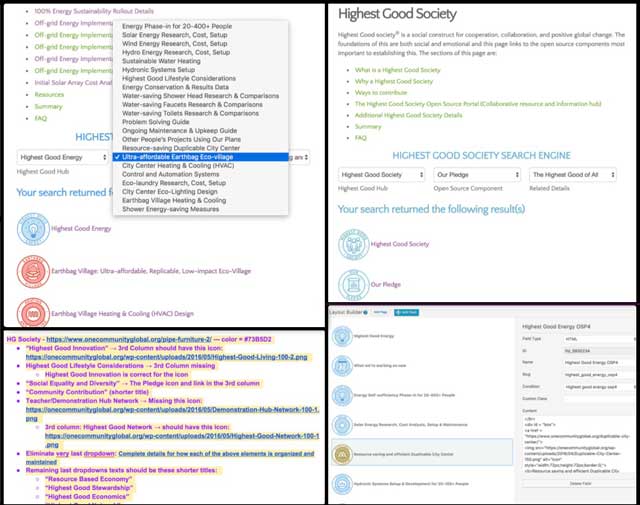
Achieving Earth’s Ecological Potential – Highest Good Society and Highest Good Energy – Click for Page
Sowmya Manohar (Software Engineer, Web Developer & Net Application Developer) working on the Highest Good Network software successfully updated the data in MongoDB through Express and completed the PUT operation in Ember.
In addition to this, Priti Kothari (Information Technology Enthusiast) also completed her 8th week helping with the Highest Good Network software. This week’s focus was working to resolve database connectivity issues, some of which you can see here.
AND WE PRODUCED THIS WEEKLY UPDATES BLOG – CLICK HERE TO SUBSCRIBE
FOLLOW ONE COMMUNITY’S PROGRESS (click icons for our pages)
INVESTOR PAGES
GET INVOLVED
CONSULTANTS | WAYS ANYONE CAN HELP | MEMBERSHIP
CLICK HERE FOR ALL PAST UPDATES
WHAT ONE COMMUNITY IS CREATING
One Community is creating a place to grow together and change the world together thereby Creating a Better World and achieving Earth’s Ecological Potential. We are creating a space that helps each other live in integrity with each other and the planet as we strive to be the greatest versions of ourselves. We do this by harmoniously respecting each other, nature, and the rest of our one shared planet.
Our goal is to demonstrate what we feel is the most sustainable, healthy, and fun environment we can create. A place based on compassion, kindness, and collaboration. This replicable community will serve as an example for what is possible.
Throughout our design process we are open sourcing and free-sharing everything needed for construction and replication. This includes what we call “Highest Good” approaches to food, energy, housing, education, for-profit and non-profit economics design, social architecture, fulfilled living, stewardship practices and more. We are creating these resources for implementation as individual components or complete developments called teacher/demonstration hubs. These hubs will help launch additional hubs as awareness and knowledge grow.
BUILDING THE FIRST OF MANY
One Community will be the first teacher/demonstration hub. It will function as an experiential-learning model that facilitates mass participation to address humanity’s most pressing challenges through: A replicable model for expansion, building seven self-sufficient village/city prototypes, becoming the world leader in open-source sustainability solutions, and evolving and expanding ALL aspects of sustainable living.
WHY ONE COMMUNITY IS CREATING THIS
The One Community self-replicating model is capable of creating a sustainable planet within 30 years. We will achieve this by establishing successful teacher/demonstration hubs on every continent. Villages include designs appropriate for each of the five main types of climates. They also include options for even the most challenged economies. These hubs will collaborate with one another, share ideas, resources, and work together as a network to heal the planet. They will also transform the global lifestyle to a more enjoyable, fulfilling, healthy, and sustainable one.
The specifics of how One Community is accomplishing this can be found on the One Community Solution Model to Create Solution-creating Models Page. Research supporting and showing the benefits of a model like this can be found on our Research and Resources Articles Archive.
Even if we don’t achieve our ultimate goal of global transformation, a self-replicating teacher/demonstration model like this will take a relatively short period of time to positively affect millions while inspiring millions more. For One Community residents (the Pioneer Team), the idea of creating and sharing the social and recreational experience with visitors is also fun, exciting, fulfilling, and an additional reason why we are creating this.
SUMMARY
One Community sees the issues of the world as interdependent and interconnected. To address them simultaneously, we are open-source blueprinting a more advanced standard of living by designing holistic, environmentally-regenerative, self-sustaining, adaptable solutions for all areas of sustainability and Creating a Better World . We will model these within a comprehensive “village/city” which will be built in the southwestern U.S. This teacher/demonstration hub will be a place people can experience a new way of living and then replicate it with our open source blueprints: creating a model solution that creates additional solution-creating models.
One Community Welcomes Oruba Rabie to the Engineering Team
Posted on October 5, 2017 by One Community
One Community welcomes Oruba Rabie to the Engineering Team as our newest Volunteer/Consultant!

Ph.D, PE, Civil Engineer: Oruba attended college in Birzeit, Palestine and received her Bachelor degree in Civil Engineering, she then moved to the US where she received both her Master’s and Doctoral degrees from New Jersey Institute of Technology with an emphasis on structural engineering. Her dissertation title was “Damage Assessment of Reinforced Concrete Columns Subjected to Blast Loads” and she has also published four papers in the same field at the ASCE/SEI, IMECE, and ASME. Oruba is a Certified Professional Engineer in the state of California and is skilled in ANSYS APDL, LS-DYNA, STAAP PRO, SAP2000, and AUTOCAD. Oruba loves volunteering at humanitarian projects and started an initiative in Palestine for rehabilitation of existing houses of needy families, where engineering students and engineers raise funds, build, rehabilitate, and furnish homes of needy families in a timely manner. As a One Community volunteer, Oruba is helping with the development of the structural engineering plans for the Duplicable City Center.
WELCOME TO THE TEAM ORUBA!
FOLLOW ONE COMMUNITY’S PROGRESS (click icons for our pages)
INVESTOR PAGES
GET INVOLVED
One Community Welcomes Priti Kothari to the Software Development Team
Posted on October 5, 2017 by One Community
One Community welcomes Priti Kothari to the Software Development Team as our newest Volunteer/Consultant!

Information Technology Enthusiast: Priti has a Masters degree in Computer Science from Wayne State University in Detroit, US and a Bachelor’s degree in Physics from MSU in India. She also has 20+ years of professional experience in the field of Information Technology and has worked at GE, Chrysler, Chrysler Financials, Blue Cross Blue Shield, Delphi, and Ally Financials. Priti is passionate about information technology and how technology advances can be leveraged to improve human life. Her expertise lies in managing projects and programs of large scale, Software Development Life Cycle and methodologies, and programming. Priti is passionate about global change and creating a better world, helping as a member of the One Community team working on the Highest Good Network software.
WELCOME TO THE TEAM PRITI!
FOLLOW ONE COMMUNITY’S PROGRESS (click icons for our pages)
INVESTOR PAGES
GET INVOLVED
One Community Welcomes Hemanth Kotaru to the Engineering Team
Posted on October 3, 2017 by One Community
One Community welcomes Hemanth Kotaru to the Engineering Team as our newest Volunteer/Consultant!

Structural Engineer: Hemanth is a Structural Engineer and a research enthusiast pursuing independent research studies. Currently a Master’s Student in Structural and Earthquake Engineering from the University of California at Los Angeles, Hemanth’s fields of interest include FEA, Earthquake Hazard Mitigation, Structural Mechanics, Computational Tools for Civil Engineering, and Alternative Building Methods. Before his Master’s, Hemanth worked as a developer for GIS software and also worked as a research intern during his bachelors. Hemanth’s interest towards Sustainability stems from a concern for nature and inspiration from ancient constructions. Observing the sustainability and performance of several ancient architectural wonders over centuries, he was inspired to explore, understand and improvise the ancient construction procedures to modern requirements. As part of this, Hemanth joined the One Community team as a researcher for the Earthbag Village, helping conduct detailed research and calculations to answer the most challenging questions related to this construction method.
WELCOME TO THE TEAM HEMANTH!
FOLLOW ONE COMMUNITY’S PROGRESS (click icons for our pages)
INVESTOR PAGES
GET INVOLVED
Eco-Community Support for Earth’s Biosphere – One Community Weekly Progress Update #236
Posted on October 1, 2017 by One Community
Eco-community support for Earth’s biosphere is one path to creating global sustainability. In support of this goal, One Community is creating open source and sustainable plans for all aspects of eco-community creation. These plans include food, energy, housing, education, for-profit and non-profit economic design, social architecture, fulfilled living, global stewardship practices, and more.
- Here’s our project overview
- Here’s our world-change methodology
- Here’s how this becomes self-replicating
- Here’s how we are open source and free-sharing all the do-it-yourself designs
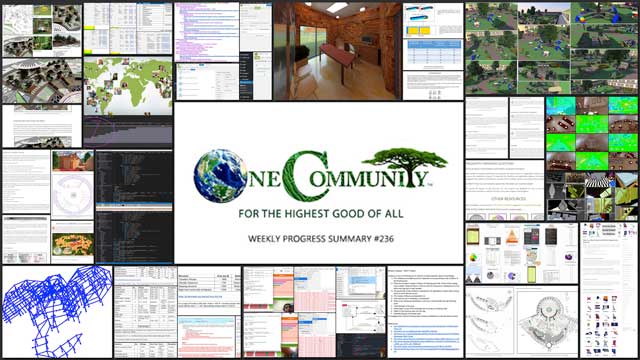
OUR MAIN OPEN SOURCE HUBS
Click on each icon to be taken to the corresponding Highest Good hub page.
One Community’s physical location will forward this movement as the first of many self-replicating teacher/demonstration communities, villages, and cities to be built around the world. This is the October 1, 2017 edition (#236) of our weekly progress update detailing our team’s development and accomplishments:
Eco-Community Support for Earth’s Biosphere
One Community Progress Update #236
Here is the bullet-point list of this last week’s design and progress discussed in detail in the video above:
ECO-COMMUNITY SUPPORT FOR EARTH’S BIOSPHERE INTRO: @0:34
HIGHEST GOOD HOUSING: @6:34
- Continued Sketchup design for the open source outdoor areas of the Recycled Materials Village (see below)
- Updated the Compressed Earth Block Village open source hub with the new floor plans (see below)
- Sangam Stanczak and the core team updated the Communal Eco-shower page (see below)
- Hemanth Kotaru completed his 9th week doing research and running calculations for the Earthbag Village (see below)
- Jagannathan Shankar Mahadevan completed his 3rd working on the Straw Bale Village cost analysis (see below)
- Hamilton Mateca created the final render of the Compressed Earth Block Village Massage and Treatment Room Looking North (see below)
- Aparna Tandon continued her work on the Compressed Earth Block Village external elements (see below)
- Samantha Robinson completed her 9th week working on the interior design for the living structure of the Tree House Village (see below)
DUPLICABLE CITY CENTER: @9:02
- Falgun Patel completed his 5th week continuing to review, run calculations, and update the specifics of the remote-energy setup plan so we can update the Highest Good energy page (see below)
- Dipti Dhondarkar continued with her 52nd week of work on the lighting specifics for the City Center (see below)
- Vamsi Pulugurtha continued work on basement heat transfer comparisons for the City Center Heating and Cooling open source hub (see below)
- Oruba Rabie officially took over working on the City Center structural engineering details (see below)
HIGHEST GOOD FOOD: @10:36
- Continued researching and organizing recently found resources for our Food Self-sufficiency Transition Plan page and Sustainable Food Nutrition Calculations page (see below)
HIGHEST GOOD EDUCATION: @11:07
- Finished rebuilding the education Evaluation and Evolution open source portal to reflect and be able to access the content created over the last few months in collaboration with Sangam Stanczak (see below)
HIGHEST GOOD SOCIETY: @11:42
- Continued developing the animation for our video that will feature where all our collaborators and volunteers are from (see below)
- Finished working on the new and standalone state-by-state resource page for the US Departments of Taxation (see below)
- Ashwin Patil continued with creation of the the Highest Good society search engine version 3.0 (see below)
- Sowmya Manohar returned to helping work on the Highest Good Network software (see below)
- Priti Kothari completed her 7th week helping with the Highest Good Network software (see below)
ECO-COMMUNITY SUPPORT FOR EARTH’S BIOSPHERE SUMMARY: @13:28
- How you can most help us right now and how anyone can help
CLICK HERE IF YOU’D LIKE TO RECEIVE AN EMAIL EACH WEEK WHEN WE RELEASE A NEW UPDATE
YOU CAN ALSO JOIN US THROUGH SOCIAL MEDIA
ONE COMMUNITY WEEKLY UPDATE DETAILS
HIGHEST GOOD HOUSING PROGRESS
 One Community is launching eco-community support for earth’s biosphere through Highest Good housing that is artistic and beautiful, more affordable, more space efficient, lasts longer, DIY buildable, and constructed with healthy and sustainable materials:
One Community is launching eco-community support for earth’s biosphere through Highest Good housing that is artistic and beautiful, more affordable, more space efficient, lasts longer, DIY buildable, and constructed with healthy and sustainable materials:
- Learn about: Our Upcoming Crowdfunding Campaign
- Learn about the different village models: 7 Sustainable Village Models
- Visit the open source portals for the first two: Earthbag Village OS Hub | Straw Bale Village OS Hub
This last week the core team continued Sketchup design for the open source outdoor areas of the Recycled Materials Village (Pod 6). This week we finished designing the outside dining area. We also updated the color of the building and worked on the landscaping.
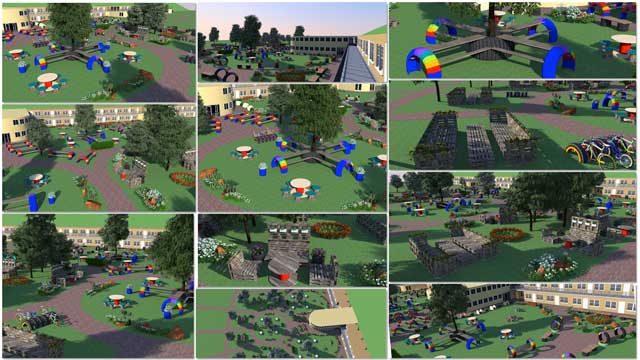
Eco-Community Support for Earth’s Biosphere – Outdoor Areas of Recycled Materials Village ” Click to Visit
The core team additionally updated the Compressed Earth Block Village open source hub with the new floor plans shown here. These include corrected patios for all three floors of the North residences.
The core team also, with the help of Sangam Stanczak (Ph.D. and P.E.), updated the Communal Eco-shower page with new biocompatible soap details, location and floor plan images, and copper-corrosion research results.
Hemanth Kotaru (Structural Engineering Masters Student) completed his 9th week with us doing research and running calculations for the Earthbag Village. This week’s focus, as shown here, was on researching the effectiveness of nails as an anti-sheer option between earthbags.
Jagannathan Shankar Mahadevan (Mechanical Engineer) completed his 3rd working on the Straw Bale Village cost analysis. What you see here are cost estimates for about half of the different areas included in this village.
Hamilton Mateca (AutoCAD and Revit Drafter and Designer) also finished his 57th week helping with the Compressed Earth Block Village design and render details. This week’s focus was this final render of the Massage and Treatment Room Looking North.
Aparna Tandon (Architect) continued her work on the Compressed Earth Block Village external elements. What you see here is her 35th week of work, focusing on the final presentation shown here and live on the site for the zone 11, the North Playground and Exercise Space.
Samantha Robinson (Graphic Designer) completed her 9th week working on the interior design for the living structure of the Tree House Village (Pod 7). This week’s focus, as shown here, was testing initial texturing for the upstairs shelving and more stair and furniture design details.
DUPLICABLE CITY CENTER PROGRESS
 One Community is launching eco-community support for earth’s biosphere through a Duplicable and Sustainable City Center that is LEED Platinum certified/Sustainable, can feed 200 people at a time, provide laundry for over 300 people, is beautiful, spacious, and saves resources, money, and space:
One Community is launching eco-community support for earth’s biosphere through a Duplicable and Sustainable City Center that is LEED Platinum certified/Sustainable, can feed 200 people at a time, provide laundry for over 300 people, is beautiful, spacious, and saves resources, money, and space:
- Learn about this building and it’s function: Duplicable City Center Open Source Hub
Falgun Patel (Mechanical Engineer) completed his 5th week continuing to review, run calculations, and update the specifics of the remote-energy setup plan so we can update the Highest Good energy page. This week’s focus, as shown here, was 2nd-generation energy-needs calculations for the initial landing party, sizing the generators, and updating the landing-party-rollout text details.
Dipti Dhondarkar, (Electrical Engineer) continued with her 52nd week of work on the lighting specifics for the City Center. This week’s focus was adding and testing multiple lighting options for the Dining Dome column, wall, overhang, and table lights.
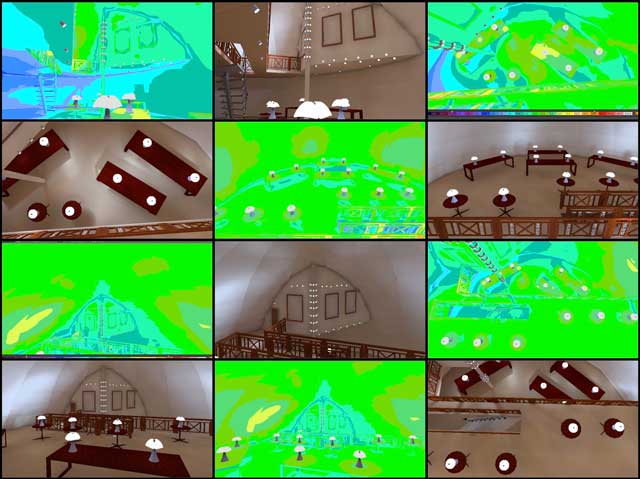
Eco-Community Support for Earth’s Biosphere – Lighting Specifics for the City Center ” Click for Page
Vamsi Pulugurtha (Mechanical Engineer) also continued work on basement heat transfer comparisons for the City Center Heating and Cooling open source hub. What you see here are Vamsi’s 4th-generation details and conclusions comparing how heat transfers from the basement and boiler room to the outside when built in-ground versus above ground.
Oruba Rabie (Ph.D, PE, and Civil Engineer) also officially took over working on the City Center structural engineering details. What you see here are some screenshots of her process looking for and correcting errors in the existing model.
HIGHEST GOOD FOOD PROGRESS
 One Community is launching eco-community support for earth’s biosphere through Highest Good food that is more diverse, more nutritious, locally grown and sustainable, and part of our open source botanical garden model to support and share bio-diversity:
One Community is launching eco-community support for earth’s biosphere through Highest Good food that is more diverse, more nutritious, locally grown and sustainable, and part of our open source botanical garden model to support and share bio-diversity:
- Learn about the structures: Hoop House Hub | Aquapini & Walipini Open Source Hub
- See what we’ll be growing: Gardens & Hoop Houses | Large-scale Structures | Food Forest | TA
This week, the core team continued researching and organizing recently found resources for our Food Self-sufficiency Transition Plan and Sustainable Food Nutrition Calculations page, as you see here.
HIGHEST GOOD EDUCATION PROGRESS
 One Community is launching eco-community support for earth’s biosphere through Highest Good education that is for all ages, applicable in any environment, adaptable to individual needs, far exceeds traditional education standards, and more fun for both the teachers and the students:
One Community is launching eco-community support for earth’s biosphere through Highest Good education that is for all ages, applicable in any environment, adaptable to individual needs, far exceeds traditional education standards, and more fun for both the teachers and the students:
- Learn about the components: Education open source hub
- Learn how the components work together: How to use the Education for Life Program
This week, the core team finished rebuilding the education Evaluation and Evolution open source portal to reflect and be able to access the content created over the last few months in collaboration with Sangam Stanczak (Ph.D. and P.E.). You can see some of the new sections here.
HIGHEST GOOD SOCIETY PROGRESS
 One Community is launching eco-community support for earth’s biosphere through a Highest Good society approach to living that is founded on fulfilled living, the study of meeting human needs, Community, and making a difference in the world:
One Community is launching eco-community support for earth’s biosphere through a Highest Good society approach to living that is founded on fulfilled living, the study of meeting human needs, Community, and making a difference in the world:
- Read the Highest Good society overview: Highest Good Society
- Learn about the model for fulfilled living and sharing: A Day in the Life
- Learn about the 4 economic models: RBE | For-profit | Non-profit | Entrepreneurship
- Learn about our open source community collaboration and management software: The Highest Good Network
This last week the core team continued developing the animation for our video that will feature where all our collaborators and volunteers are from. The focus was adding the final image movements to bring us to 100% complete.
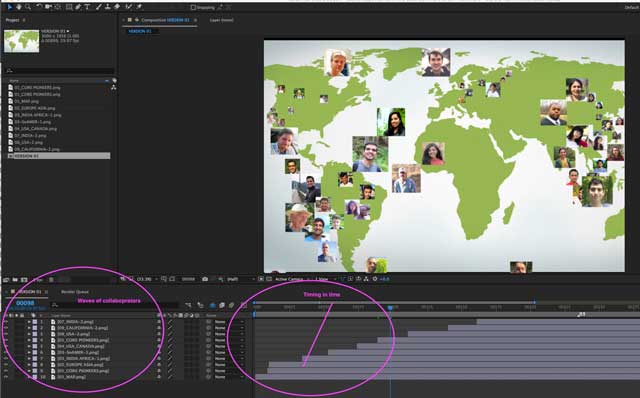
Eco-Community Support for Earth’s Biosphere – Graphic – Collaborators and Volunteers ” Click for Team
In addition to this we finished working on the new and standalone state-by-state resource page for the US Departments of Taxation, creating a header image, performing final edits, and completing the SEO information and sharing it. You can see this page here.
Ashwin Patil (Web Developer) continued with creation of the the Highest Good society search engine version 3.0, integrating another round of suggested edits and missing pages. You can see some of this work-in-progress here and we’d say this search engine is now 90% complete.
In addition to this, Sowmya Manohar (Software Engineer, Web Developer & Net Application Developer) returned to helping work on the Highest Good Network software. This week’s focus was continuing her work on the functions for retrieving account information for specific people based on individual IDs and populating the “Profile Page” for the specific person with their respective values.
In addition to this, Priti Kothari (Information Technology Enthusiast) also completed her 7th week helping with the Highest Good Network software. This week’s focus was experimenting with creating the database model design suitable for the application, some of which you can see here.
AND WE PRODUCED THIS WEEKLY UPDATES BLOG – CLICK HERE TO SUBSCRIBE
FOLLOW ONE COMMUNITY’S PROGRESS (click icons for our pages)
INVESTOR PAGES
GET INVOLVED
CONSULTANTS | WAYS ANYONE CAN HELP | MEMBERSHIP
CLICK HERE FOR ALL PAST UPDATES
WHAT ONE COMMUNITY IS CREATING
One Community is creating a place to grow together and change the world together thereby Creating a Better World and creating Eco-Community Support for Earth’s Biosphere.We are creating a space that helps each other live in integrity with each other and the planet as we strive to be the greatest versions of ourselves. We do this by harmoniously respecting each other, nature, and the rest of our one shared planet.
Our goal is to demonstrate what we feel is the most sustainable, healthy, and fun environment we can create. A place based on compassion, kindness, and collaboration. This replicable community will serve as an example for what is possible.
Throughout our design process we are open sourcing and free-sharing everything needed for construction and replication. This includes what we call “Highest Good” approaches to food, energy, housing, education, for-profit and non-profit economics design, social architecture, fulfilled living, stewardship practices and more. We are creating these resources for implementation as individual components or complete developments called teacher/demonstration hubs. These hubs will help launch additional hubs as awareness and knowledge grow.
BUILDING THE FIRST OF MANY
One Community will be the first teacher/demonstration hub. It will function as an experiential-learning model that facilitates mass participation to address humanity’s most pressing challenges through: A replicable model for expansion, building seven self-sufficient village/city prototypes, becoming the world leader in open-source sustainability solutions, and evolving and expanding ALL aspects of sustainable living.
WHY ONE COMMUNITY IS CREATING THIS
The One Community self-replicating model is capable of creating a sustainable planet within 30 years. We will achieve this by establishing successful teacher/demonstration hubs on every continent. Villages include designs appropriate for each of the five main types of climates. They also include options for even the most challenged economies. These hubs will collaborate with one another, share ideas, resources, and work together as a network to heal the planet. They will also transform the global lifestyle to a more enjoyable, fulfilling, healthy, and sustainable one.
The specifics of how One Community is accomplishing this can be found on the One Community Solution Model to Create Solution-creating Models Page. Research supporting and showing the benefits of a model like this can be found on our Research and Resources Articles Archive.
Even if we don’t achieve our ultimate goal of global transformation, a self-replicating teacher/demonstration model like this will take a relatively short period of time to positively affect millions while inspiring millions more. For One Community residents (the Pioneer Team), the idea of creating and sharing the social and recreational experience with visitors is also fun, exciting, fulfilling, and an additional reason why we are creating this.
SUMMARY
One Community sees the issues of the world as interdependent and interconnected. To address them simultaneously, we are open-source blueprinting a more advanced standard of living by designing holistic, environmentally-regenerative, self-sustaining, adaptable solutions for all areas of sustainability and Creating a Better World . We will model these within a comprehensive “village/city” which will be built in the southwestern U.S. This teacher/demonstration hub will be a place people can experience a new way of living and then replicate it with our open source blueprints: creating a model solution that creates additional solution-creating models.
Cultivation of Global Sustainability – One Community Weekly Progress Update #235
Posted on September 24, 2017 by One Community
One Community is focused on cultivation of global sustainability through sustainable and open source food, energy, housing, education, for-profit and non-profit economic design, social architecture, fulfilled living, global stewardship practices, and more. We call this living and creating for The Highest Good of All.
- Here’s our project overview
- Here’s our world-change methodology
- Here’s how this becomes self-replicating
- Here’s how we are open source and free-sharing all the do-it-yourself designs

OUR MAIN OPEN SOURCE HUBS
Click on each icon to be taken to the corresponding Highest Good hub page.
One Community’s physical location will forward this movement as the first of many self-replicating teacher/demonstration communities, villages, and cities to be built around the world. This is the September 24, 2017 edition (#235) of our weekly progress update detailing our team’s development and accomplishments:
Cultivation of Global Sustainability
One Community Progress Update #235
Here is the bullet-point list of this last week’s design and progress discussed in detail in the video above:
CULTIVATION OF GLOBAL SUSTAINABILITY INTRO: @0:34
HIGHEST GOOD HOUSING: @6:08
- Continued Sketchup design for the open source outdoor areas of the Recycled Materials Village (see below)
- Updated the Compressed Earth Block Village open source hub with new images, etc. (see below)
- Updated the Communal Eco-shower page, Control and Automation page, and thermostatic mixing valve pages, with the help of Sangam Stanczak, with new water and energy-saving details and strategies (see below)
- Hemanth Kotaru completed his 8th week with us doing research, running calculations, and creating updated AutoCAD drawings for the Earthbag Village specifics (see below)
- Jagannathan Shankar Mahadevan completed his 2nd week working on the Straw Bale Village cost analysis (see below)
- Hamilton Mateca finished his 56th week helping with the Compressed Earth Block Village design and render details (see below)
- Aparna Tandon continued her work on the Compressed Earth Block Village external elements (see below)
- Samantha Robinson completed her 8th week working on the interior design for the living structure of the Tree House Village (see below)
DUPLICABLE CITY CENTER: @8:51
- Falgun Patel completed his 4th week continuing to review, run calculations, and update the specifics of the remote-energy setup plan so we can update the Highest Good energy page (see below)
- Dipti Dhondarkar continued with her 51st week of work on the lighting specifics for the City Center (see below)
- Aravind Vasudevan continued his calculations and research for climate battery component of the City Center Heating and Cooling open source hub (see below)
- Vamsi Pulugurtha continued work on basement heat transfer comparisons for the City Center Heating and Cooling open source hub (see below)
HIGHEST GOOD FOOD: @10:22
- Continued researching details for our food needs to review the details for the Food Self-sufficiency Transition Plan (see below)
HIGHEST GOOD EDUCATION: @10:58
- Began rebuilding the education Evaluation and Evolution open source portal to reflect and be able to access the content created over the last few months in collaboration with Sangam Stanczak (see below)
HIGHEST GOOD SOCIETY: @11:32
- Invested several more hours developing the animation for our video that will feature where all our collaborators and volunteers are from (see below)
- Made the final changes and additions to the taxes page (see below)
- Continued working on the new and standalone state-by-state resource page for the US Departments of Taxation
- Priti Kothari completed her 6th week helping with the Highest Good Network software (see below)
CULTIVATION OF GLOBAL SUSTAINABILITY SUMMARY: @12:50
- How you can most help us right now and how anyone can help
CLICK HERE IF YOU’D LIKE TO RECEIVE AN EMAIL EACH WEEK WHEN WE RELEASE A NEW UPDATE
YOU CAN ALSO JOIN US THROUGH SOCIAL MEDIA
ONE COMMUNITY WEEKLY UPDATE DETAILS
HIGHEST GOOD HOUSING PROGRESS
 One Community is forwarding the cultivation of global sustainability through Highest Good housing that is artistic and beautiful, more affordable, more space efficient, lasts longer, DIY buildable, and constructed with healthy and sustainable materials:
One Community is forwarding the cultivation of global sustainability through Highest Good housing that is artistic and beautiful, more affordable, more space efficient, lasts longer, DIY buildable, and constructed with healthy and sustainable materials:
- Learn about: Our Upcoming Crowdfunding Campaign
- Learn about the different village models: 7 Sustainable Village Models
- Visit the open source portals for the first two: Earthbag Village OS Hub | Straw Bale Village OS Hub
The core team continued Sketchup design for the open source outdoor areas of the Recycled Materials Village (Pod 6). This week we added missing rails, doors and windows to the dining building, and updated the dining area walls with openings for the doors and windows on both floors.
The core team also continued working on the complete Tree House Village (Pod 7) village render, which is now approximately 90% complete and shown here as the 25%-smaller bottom version.
The core team additionally updated the Compressed Earth Block Village open source hub with new images, descriptions for all the images, formatting, and a new table of contents. You can see examples of the newly updated page and content here.

Cultivation of Global Sustainability – Compressed Earth Block Village Open source Hub – Click for Page
The core team also, with the help of Sangam Stanczak (Ph.D. and P.E.), updated the Communal Eco-shower page, Control and Automation page, and thermostatic mixing valve pages with new water and energy-saving details and strategies. You can see some of this work here.

Cultivation of Global Sustainability – Communal Eco-Shower, Control Automation Pages – Click to Visit
Hemanth Kotaru (Structural Engineering Masters Student) completed his 8th week with us doing research, running calculations, and creating updated AutoCAD drawings for the Earthbag Village specifics. You can see here some of this work along with the behind-the-scenes editing and revisions questions.

Cultivation of Global Sustainability – Research – AutoCAD Drawings – Earthbag Village – Click for Page
Jagannathan Shankar Mahadevan (Mechanical Engineer) completed his 2nd week working on the Straw Bale Village cost analysis. What you see here are outlines of the HVAC system and the beginnings of costing out the specifics for the residential sections of the village.

Cultivation of Global Sustainability – Continued Work – Straw Bale Village Cost Analysis – Click to Visit
Hamilton Mateca (AutoCAD and Revit Drafter and Designer) also finished his 56th week helping with the Compressed Earth Block Village design and render details. This week’s focus was version 2 and 3 of the massage room renders, as seen here.

Cultivation of Global Sustainability – Earth Block Village Design and Render details – Click for Page
Aparna Tandon (Architect) continued her work on the Compressed Earth Block Village external elements. What you see here is her 34th week of work, focusing on the final presentation shown here (and live on the site) for the zone 8 and 9 exercise and recreation areas.
Samantha Robinson (3D Designer) completed her 8th week working on the interior design for the living structure of the Tree House Village (Pod 7). This week’s focus, as shown here, was designing the railing specifics for the stairway.
DUPLICABLE CITY CENTER PROGRESS
 One Community is forwarding the cultivation of global sustainability through a Duplicable and Sustainable City Center that is LEED Platinum certified/Sustainable, can feed 200 people at a time, provide laundry for over 300 people, is beautiful, spacious, and saves resources, money, and space:
One Community is forwarding the cultivation of global sustainability through a Duplicable and Sustainable City Center that is LEED Platinum certified/Sustainable, can feed 200 people at a time, provide laundry for over 300 people, is beautiful, spacious, and saves resources, money, and space:
- Learn about this building and it’s function: Duplicable City Center Open Source Hub
Falgun Patel (Mechanical Engineer) completed his 4th week continuing to review, run calculations, and update the specifics of the remote-energy setup plan so we can update the Highest Good energy page. This week’s focus, as shown here, was detailed energy-needs calculations for the initial construction equipment, Transition Kitchen, and Ultimate Classroom.
Dipti Dhondarkar, (Electrical Engineer) continued with her 51st week of work on the lighting specifics for the City Center. This week’s focus was testing multiple angles and finalizing the Dining Dome flood light placement, as shown here.

Cultivation of Global Sustainability – Continued Work Lighting Specifics for City Center ” Click for Page
Aravind Vasudevan (Mechanical Engineer) continued his calculations and research for climate battery component of the City Center Heating and Cooling open source hub. This week’s focus was creation of the initial presentation structure we’re evolving into the complete design, as shown here.

Cultivation of Global Sustainability – Climate Battery Component of City Center ” Click to Visit Page
Vamsi Pulugurtha (Mechanical Engineer) also continued work on basement heat transfer comparisons for the City Center Heating and Cooling open source hub. What you see here is Vamsi’s newest details and conclusions comparing how heat transfers from the basement and boiler room to the outside when built in-ground versus above ground.
HIGHEST GOOD FOOD PROGRESS
 One Community is forwarding the cultivation of global sustainability through Highest Good food that is more diverse, more nutritious, locally grown and sustainable, and part of our open source botanical garden model to support and share bio-diversity:
One Community is forwarding the cultivation of global sustainability through Highest Good food that is more diverse, more nutritious, locally grown and sustainable, and part of our open source botanical garden model to support and share bio-diversity:
- Learn about the structures: Hoop House Hub | Aquapini & Walipini Open Source Hub
- See what we’ll be growing: Gardens & Hoop Houses | Large-scale Structures | Food Forest | TA
This week, the core team continued editing the food pages. We continued researching details for our food needs to review the details for the Food Self-sufficiency Transition Plan and found 31 additional resources for checking calculations on the Sustainable Food Nutrition Calculations page, as you see here.
HIGHEST GOOD EDUCATION PROGRESS
 One Community is forwarding the cultivation of global sustainability through Highest Good education that is for all ages, applicable in any environment, adaptable to individual needs, far exceeds traditional education standards, and more fun for both the teachers and the students:
One Community is forwarding the cultivation of global sustainability through Highest Good education that is for all ages, applicable in any environment, adaptable to individual needs, far exceeds traditional education standards, and more fun for both the teachers and the students:
- Learn about the components: Education open source hub
- Learn how the components work together: How to use the Education for Life Program
This week, the core team began rebuilding the education Evaluation and Evolution open source portal to reflect and be able to access the content created over the last few months in collaboration with Sangam Stanczak (Ph.D. and P.E.). You can see some of this work-in-progress here.

Cultivation of Global Sustainability – Rebuilding Education, Evaluation, Evolution Portal – Click for Page
HIGHEST GOOD SOCIETY PROGRESS
 One Community is forwarding the cultivation of global sustainability through a Highest Good society approach to living that is founded on fulfilled living, the study of meeting human needs, Community, and making a difference in the world:
One Community is forwarding the cultivation of global sustainability through a Highest Good society approach to living that is founded on fulfilled living, the study of meeting human needs, Community, and making a difference in the world:
- Read the Highest Good society overview: Highest Good Society
- Learn about the model for fulfilled living and sharing: A Day in the Life
- Learn about the 4 economic models: RBE | For-profit | Non-profit | Entrepreneurship
- Learn about our open source community collaboration and management software: The Highest Good Network
This week the core team invested several more hours developing the animation for our video that will feature where all our collaborators and volunteers are from. The focus was developing the image movements and we are now approximately 50% complete.

Cultivation of Global Sustainability – Graphic Showing Our Collaborators, Volunteers ” Click for Team
The core team also made the final changes and additions to the taxes page, bringing it to 100% completion.

Cultivation of Global Sustainability – Made Final Changes and Completed the Taxes Page – Click to Visit
In addition to this we continued working on the new and standalone state-by-state resource page for the US Departments of Taxation, creating all the text, fixing all the image links on the page, and adding in SEO information. You can see some of this page-in-progress here.
In addition to this, Priti Kothari (Information Technology Enthusiast) also completed her 6th week helping with the Highest Good Network software. This week’s focus was successfully getting the “D3” software to create the horizontal bar chart in the leaderboard based on the hard coded model data. You can see some of this work here.

Cultivation of Global Sustainability – Continued Work – Highest Good Network Software – Click to Visit
AND WE PRODUCED THIS WEEKLY UPDATES BLOG – CLICK HERE TO SUBSCRIBE
FOLLOW ONE COMMUNITY’S PROGRESS (click icons for our pages)
INVESTOR PAGES
GET INVOLVED
CONSULTANTS | WAYS ANYONE CAN HELP | MEMBERSHIP
CLICK HERE FOR ALL PAST UPDATES
WHAT ONE COMMUNITY IS CREATING
One Community is creating a place to grow together and change the world together thereby Creating a Better World and setting up the Global Conservation Plan.We are creating a space that helps each other live in integrity with each other and the planet as we strive to be the greatest versions of ourselves. We do this by harmoniously respecting each other, nature, and the rest of our one shared planet.
Our goal is to demonstrate what we feel is the most sustainable, healthy, and fun environment we can create. A place based on compassion, kindness, and collaboration. This replicable community will serve as an example for what is possible.
Throughout our design process we are open sourcing and free-sharing everything needed for construction and replication. This includes what we call “Highest Good” approaches to food, energy, housing, education, for-profit and non-profit economics design, social architecture, fulfilled living, stewardship practices and more. We are creating these resources for implementation as individual components or complete developments called teacher/demonstration hubs. These hubs will help launch additional hubs as awareness and knowledge grow.
BUILDING THE FIRST OF MANY
One Community will be the first teacher/demonstration hub. It will function as an experiential-learning model that facilitates mass participation to address humanity’s most pressing challenges through: A replicable model for expansion, building seven self-sufficient village/city prototypes, becoming the world leader in open-source sustainability solutions, and evolving and expanding ALL aspects of sustainable living.
WHY ONE COMMUNITY IS CREATING THIS
The One Community self-replicating model is capable of creating a sustainable planet within 30 years. We will achieve this by establishing successful teacher/demonstration hubs on every continent. Villages include designs appropriate for each of the five main types of climates. They also include options for even the most challenged economies. These hubs will collaborate with one another, share ideas, resources, and work together as a network to heal the planet. They will also transform the global lifestyle to a more enjoyable, fulfilling, healthy, and sustainable one.
The specifics of how One Community is accomplishing this can be found on the One Community Solution Model to Create Solution-creating Models Page. Research supporting and showing the benefits of a model like this can be found on our Research and Resources Articles Archive.
Even if we don’t achieve our ultimate goal of global transformation, a self-replicating teacher/demonstration model like this will take a relatively short period of time to positively affect millions while inspiring millions more. For One Community residents (the Pioneer Team), the idea of creating and sharing the social and recreational experience with visitors is also fun, exciting, fulfilling, and an additional reason why we are creating this.
SUMMARY
One Community sees the issues of the world as interdependent and interconnected. To address them simultaneously, we are open-source blueprinting a more advanced standard of living by designing holistic, environmentally-regenerative, self-sustaining, adaptable solutions for all areas of sustainability and Creating a Better World . We will model these within a comprehensive “village/city” which will be built in the southwestern U.S. This teacher/demonstration hub will be a place people can experience a new way of living and then replicate it with our open source blueprints: creating a model solution that creates additional solution-creating models.
 One Community
One Community